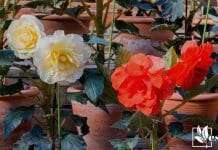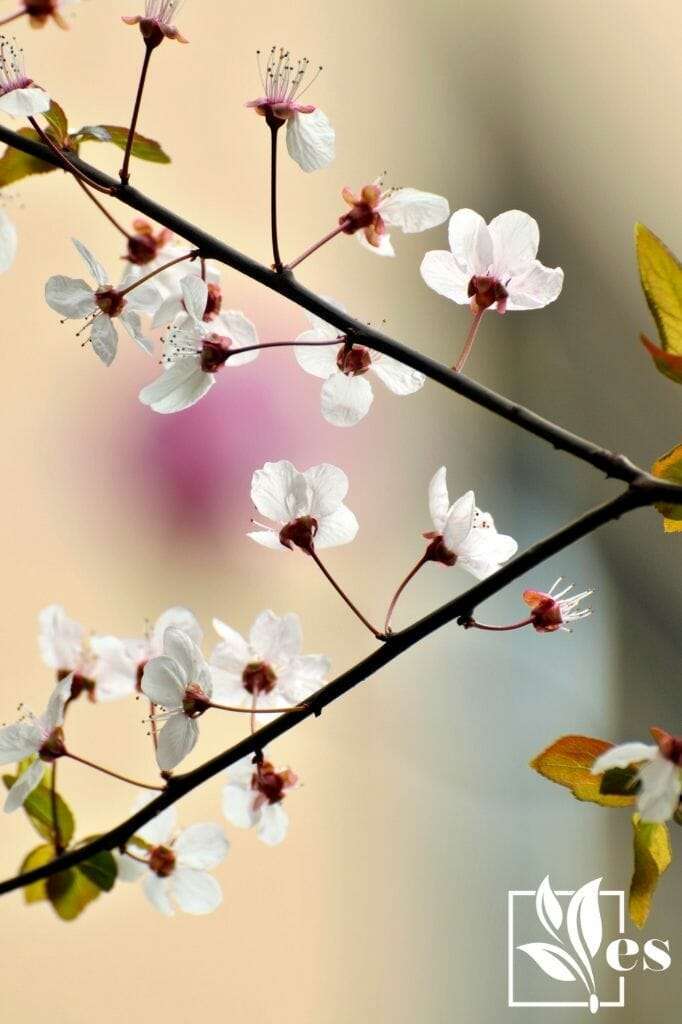 Chinese flowers are frequently depicted in Chinese art and poetry, but the symbolism and the underlying message may go over your head if you don’t understand the floriography, or the meanings linked with specific flowers. Some Chinese flowers have symbolic connotations associated with their Chinese names.
Chinese flowers are frequently depicted in Chinese art and poetry, but the symbolism and the underlying message may go over your head if you don’t understand the floriography, or the meanings linked with specific flowers. Some Chinese flowers have symbolic connotations associated with their Chinese names.
Read on to discover the significance of flowers in Chinese culture, as well as the symbolisms and taboos linked with some of them.
JUMP TO TOPIC
- List of 27 Traditional Chinese Flowers
- 1. Plum Blossoms
- 2. Chinese Rose
- 3. Camellia
- 4. Lotus Flowers
- 5. Orchid
- 6. Chrysanthemum
- 7. Hibiscus Flowers
- 8. Magnolia
- 9. Iris
- 10. Peony Flowers
- 11. Trichosanthes Kirilowii
- 12. Sunflower
- 13. Azalea
- 14. Narcissus
- 15. Osmanthus
- 16. Rhododendron
- 17. Gardenia
- 18. Jasmine
- 19. Lilies
- 20. Aster
- 21. Wintersweet
- 22. Balsamine
- 23. Water Lilies
- 24. Chinese Sacred Lily
- 25. Ranunculus
- 26. Tulip
- 27. Chinese Carnation
List of 27 Traditional Chinese Flowers
Here is an extensive list of the most significant Chinese flowers and plants.
1. Plum Blossoms
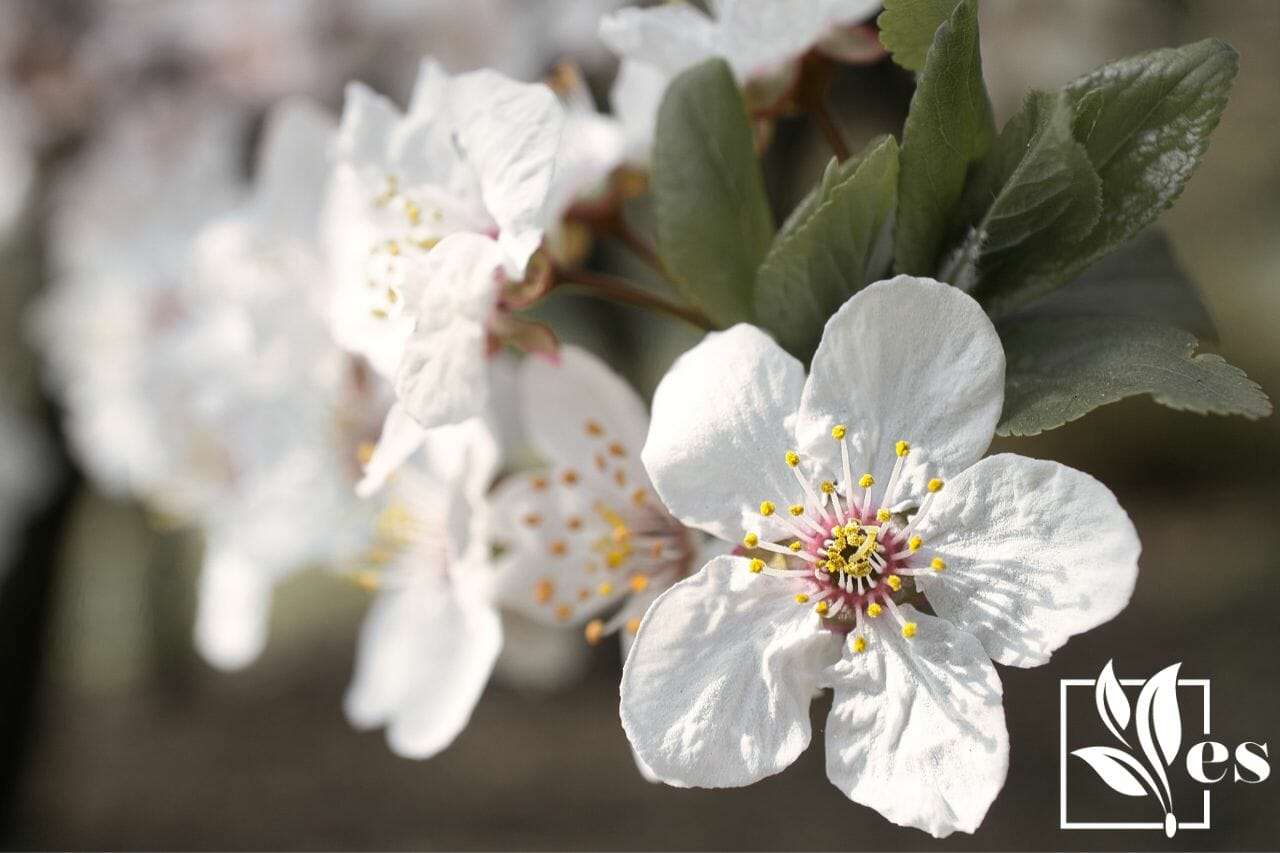 The Plum Blossom of the Prunus genus is the popular national flower of the Republic of China. The flower of the Plum tree is symbolic of the end of winter and the beginning of spring in Chinese traditions.
The Plum Blossom of the Prunus genus is the popular national flower of the Republic of China. The flower of the Plum tree is symbolic of the end of winter and the beginning of spring in Chinese traditions.
The pale pink blossoms of the tree are prized because they bloom so brightly and fearlessly in the midst of the bitter coldness.
They represent optimism and persistence, as well as beauty thriving in adversity.
- Botanical Name: Prunus mume
- Message: Optimism
- Common Colors: White and Crimson
- Popular Varieties: Purple pony, Pigeon, Chicksaw, Flatwoods
- Growing zones: 3-8
- Light Requirements: Full sun, can tolerate partial shade
2. Chinese Rose
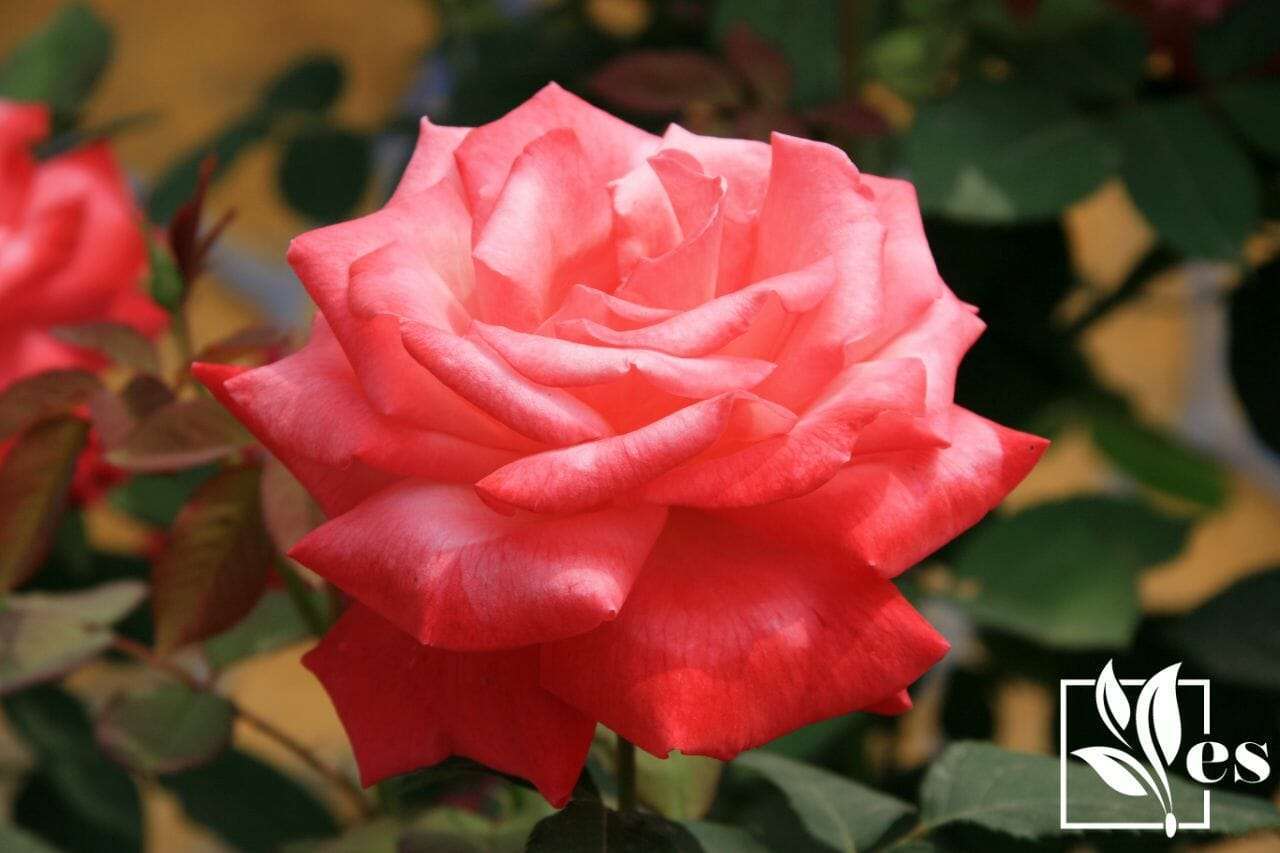 The Chinese Rose of the Rosaceae family, sometimes known as the China or Bengal rose, is a flower indigenous to Southwest China and the province of Hubei. It is quite unique in that it is among some of the few flowers that bloom all year.
The Chinese Rose of the Rosaceae family, sometimes known as the China or Bengal rose, is a flower indigenous to Southwest China and the province of Hubei. It is quite unique in that it is among some of the few flowers that bloom all year.
It is known as the “Queen of Flowers” and is exchanged between partners on special occasions such as Valentine’s Day because of its beauty. It also connotes good luck and is given to commemorate accomplishments and birthdays.
- Botanical Name: Rosa chinensis
- Message: Good Fortune
- Common Colors: Red
- Popular Varieties: Spontanea, Rosa semperflorens
- Growing zones: 7-9
- Light Requirements: Direct Sunlight
3. Camellia
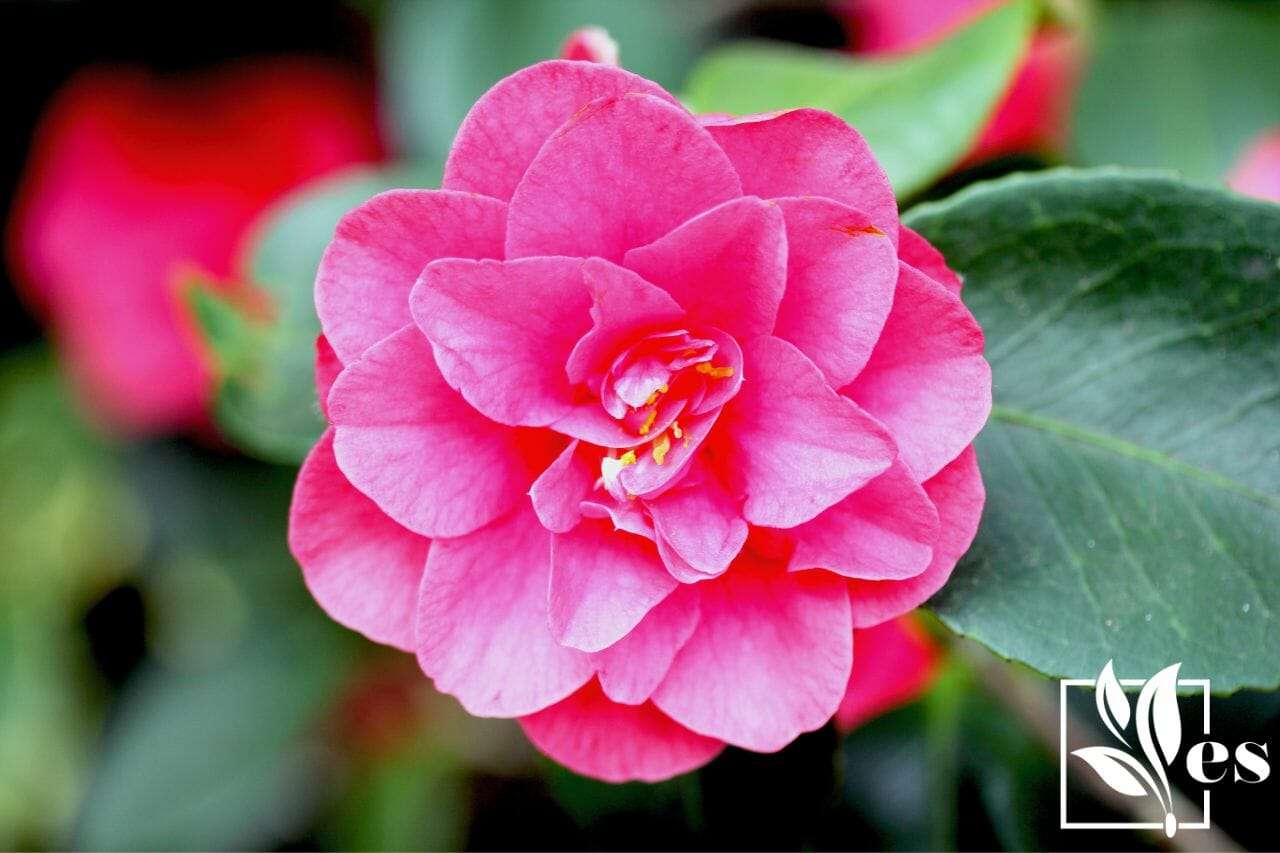 The Camellia is the national flower of Southern China. It is a ceremonial flower commonly used to make teas and essential oils and is often associated with youthful “sons and daughters” in Chinese culture. The camellia also symbolizes loyalty, purity and passion or desire.
The Camellia is the national flower of Southern China. It is a ceremonial flower commonly used to make teas and essential oils and is often associated with youthful “sons and daughters” in Chinese culture. The camellia also symbolizes loyalty, purity and passion or desire.
An interesting use of Camellia’s oil is that it is used to sharpen blades, razors and knives.
- Botanical Name: Camellia japonica
- Message: Young sons & daughters
- Common Colors: Red, white, pink
- Popular Variations: April Tryst, April Rose, Winter’s Rose
- Growing zones: 6
- Light Requirements: Partial shade
4. Lotus Flowers
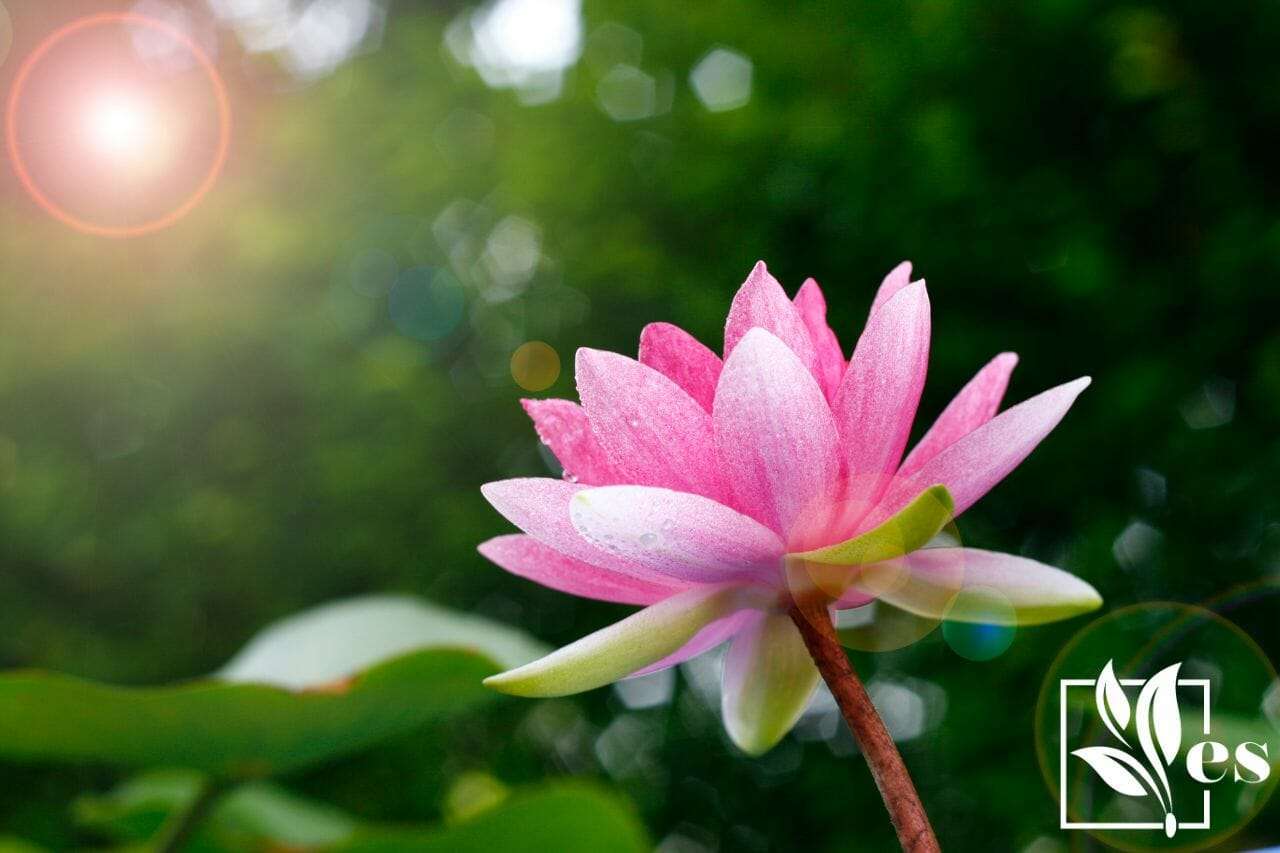 In Buddhism, the lotus has a deep spiritual significance. Its meanings include innocence and purity. Many people think the Buddha’s seat is a Lotus, making it a sacred flower. Coughs, fevers and stomach disorders are all treated with the lotus flower in Chinese medicine.
In Buddhism, the lotus has a deep spiritual significance. Its meanings include innocence and purity. Many people think the Buddha’s seat is a Lotus, making it a sacred flower. Coughs, fevers and stomach disorders are all treated with the lotus flower in Chinese medicine.
Its soothing movements indicate peace and beauty, and it grows easily in moving water bodies and still ponds. You can easily combine water lilies with lotus.
- Botanical Name: Nelumbo nucifera
- Message: Purity, tranquility, and beauty
- Common Colors: Pink, white, yellow, purple, blue
- Popular Variations: Pink China, Sapphire Blue, Beautiful Dancer
- Growing zones: 5-10
- Light Requirements: Six hours of direct sunlight
5. Orchid
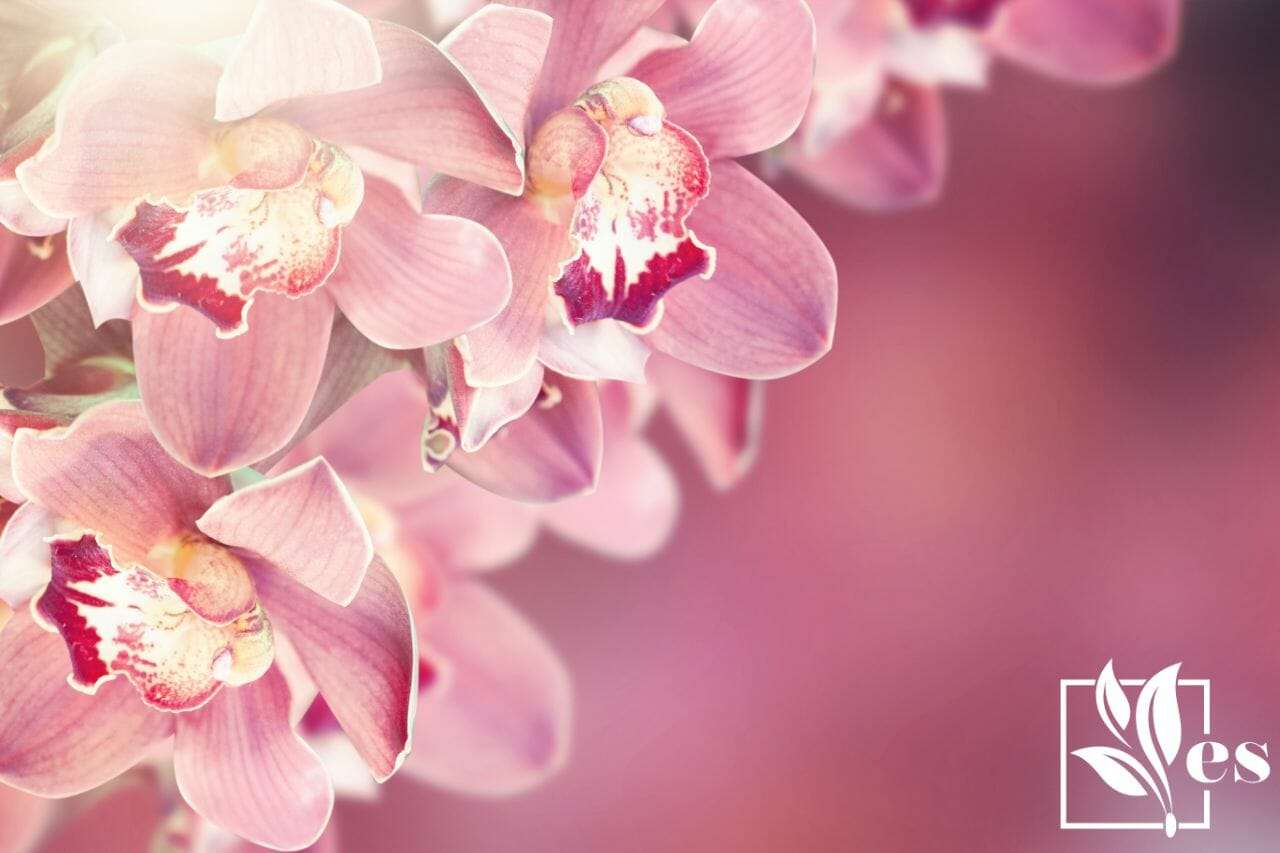 The majority of orchids are houseplants, although there are a few hardier ground-growing orchids that may be grown outside. In China, the orchid represents love, beauty, riches and success in one’s married life.
The majority of orchids are houseplants, although there are a few hardier ground-growing orchids that may be grown outside. In China, the orchid represents love, beauty, riches and success in one’s married life.
These ancient plants are believed to have existed even before the shifting of the continents! Make sure to keep them warm to avoid any cold damages to your orchids.
- Botanical Name: Orchidaceae
- Message: Love, wealth, marriage
- Common Colors: White, blue, purple, pink, yellow
- Popular Variations: Lady slipper, ladies tresses, Chinese ground orchid
- Growing zones: 8
- Light Requirements: Indirect light
6. Chrysanthemum
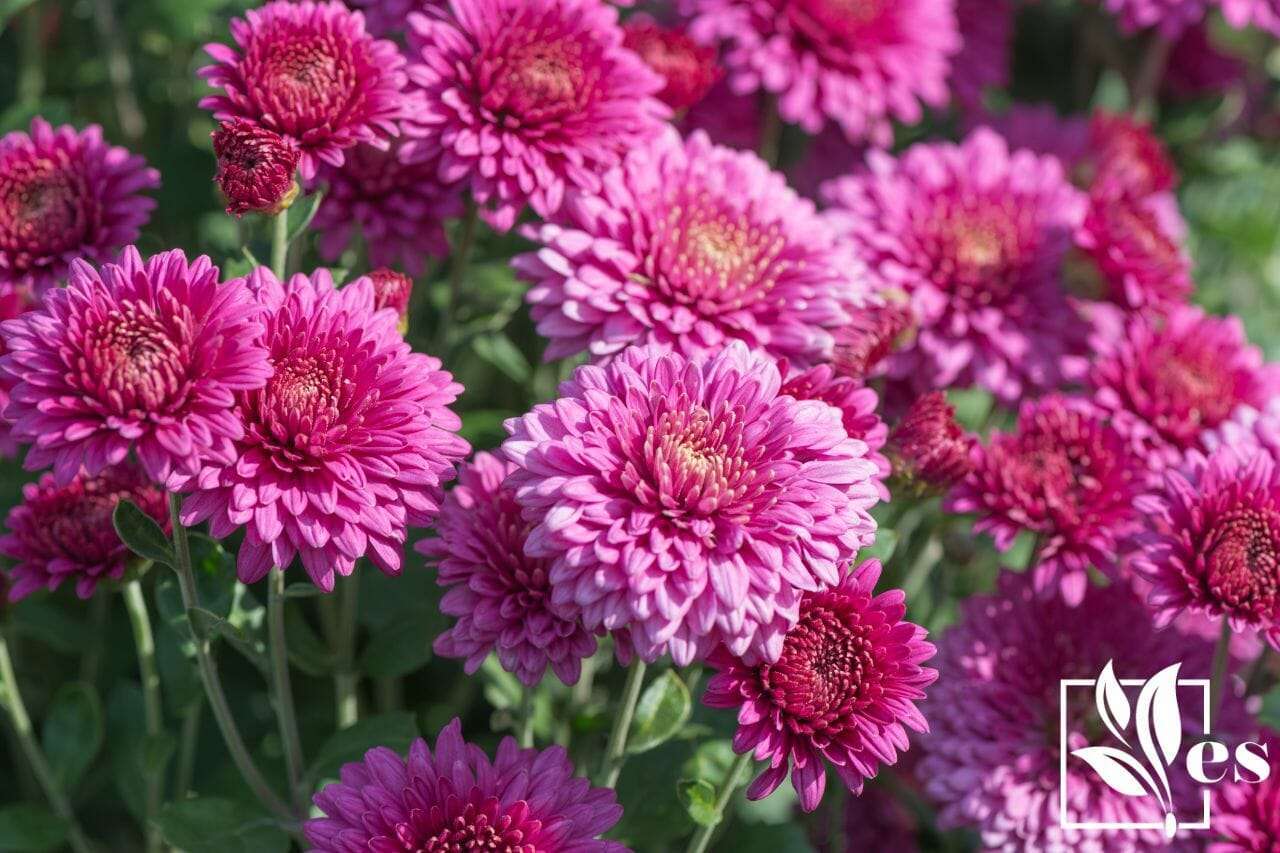 Chrysanthemums have been grown in China for generations. The first mentions of this flower can be seen in Chinese writings from the 15th century B.C. The cooked roots of chrysanthemums are thought to provide pain relief, particularly headaches.
Chrysanthemums have been grown in China for generations. The first mentions of this flower can be seen in Chinese writings from the 15th century B.C. The cooked roots of chrysanthemums are thought to provide pain relief, particularly headaches.
They represent the ninth lunar month as well as autumn. Chrysanthemum is a Chinese term that means “long life” and “durability.”
- Botanical Name: Chrysanthemum
- Message: Honor, longevity, good luck, and vitality
- Common Colors: Red, white, yellow, violet
- Popular Variations: Single blooms, spider blooms, quilled blooms, anemone
- Growing zones: 5-9
- Light Requirements: 6 hours of sunlight daily
7. Hibiscus Flowers
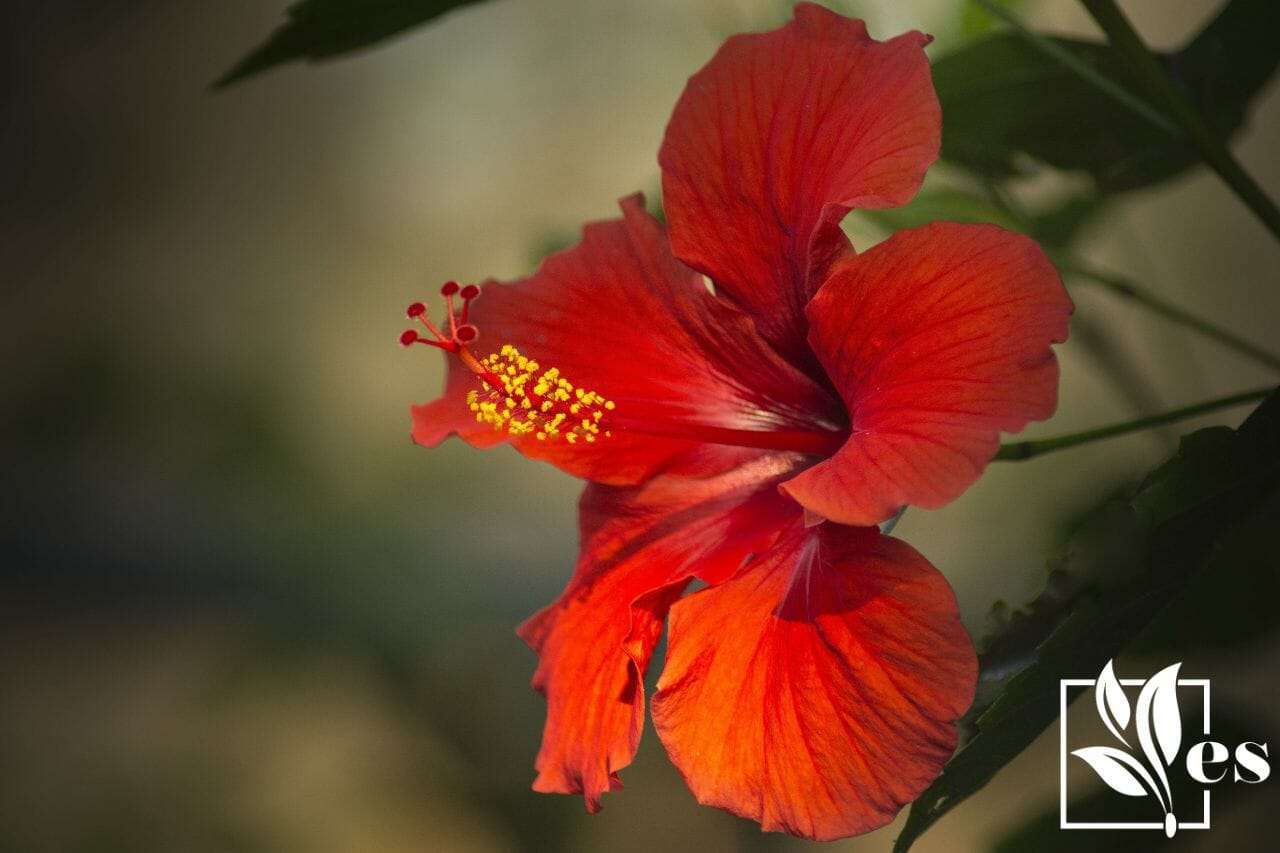 The hibiscus, sometimes referred to as the Chinese hibiscus, is another prominent flower in China. A traditional Chinese medicinal herb, Hibiscus blossoms are believed by many to have special properties that boost appetite, cool the body in the summer, encourage diuresis, reduce cough and thirst, and fight diseases.
The hibiscus, sometimes referred to as the Chinese hibiscus, is another prominent flower in China. A traditional Chinese medicinal herb, Hibiscus blossoms are believed by many to have special properties that boost appetite, cool the body in the summer, encourage diuresis, reduce cough and thirst, and fight diseases.
The petals of the Hibiscus are often infused with other chemicals to make black hair dye and black shoe polish for women.
- Botanical Name: Hibiscus
- Message: Fame, glory, splendor, riches
- Common Colors: Red, orange, yellow, pink, multicolor
- Popular Variations: China rose, rock hibiscus, rose mallow
- Growing zones: 8-11
- Light Requirements: Full sunshine
8. Magnolia
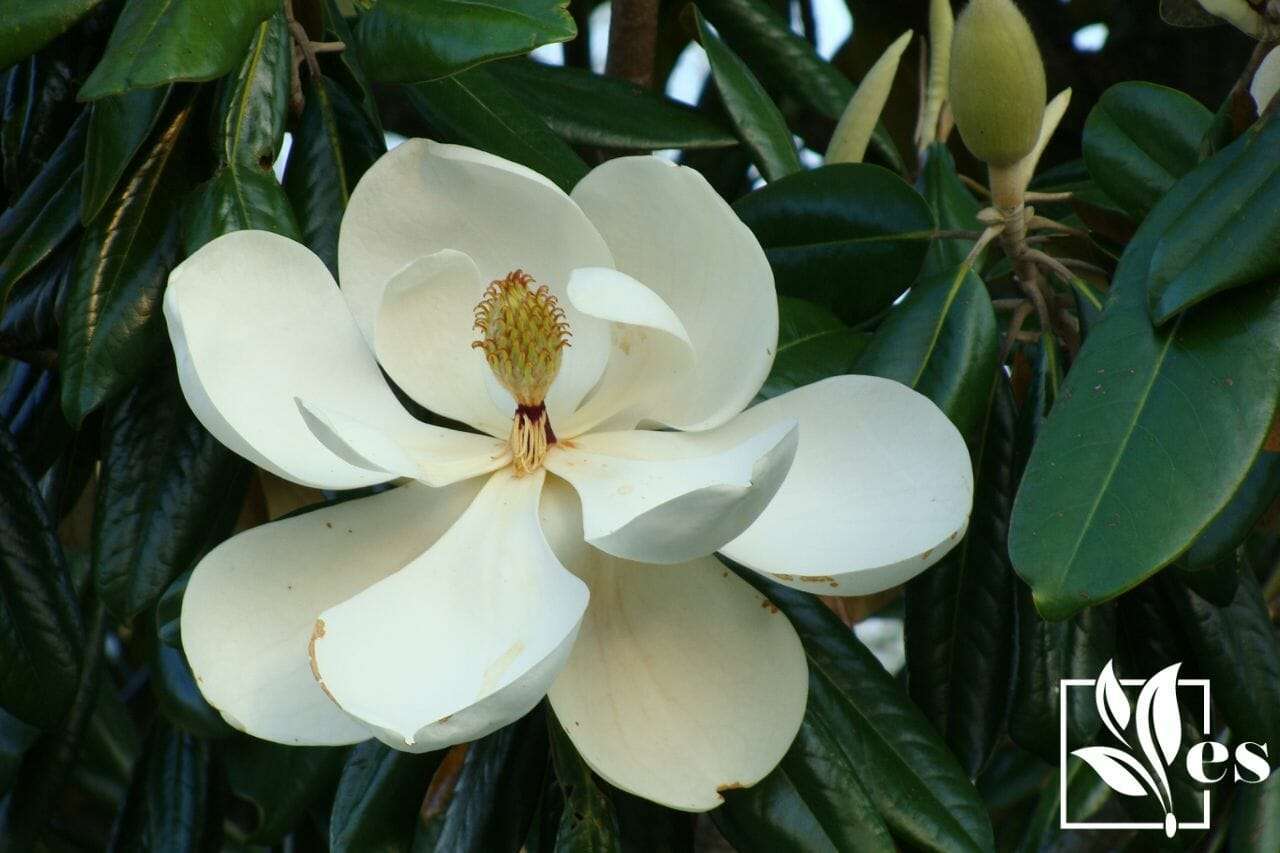 The magnolia tree has undergone selective breeding and cultivation in China for generations. In ancient times, the flower was extremely valuable and only Chinese Emperors could afford it.
The magnolia tree has undergone selective breeding and cultivation in China for generations. In ancient times, the flower was extremely valuable and only Chinese Emperors could afford it.
Magnolias are antidepressants; they treat indigestion, promote weight loss, relieve constipation, asthma, headaches, and ease anxiety.
- Botanical Name: Magnolia spp.
- Message: Honor, wealth, feminine beauty, purity
- Common Colors: White, pink, red-purple, purple
- Popular Variations: Anise magnolia, bigleaf magnolia, saucer magnolia
- Growing zones: 7-10
- Light Requirements: Sun or partial shade
9. Iris
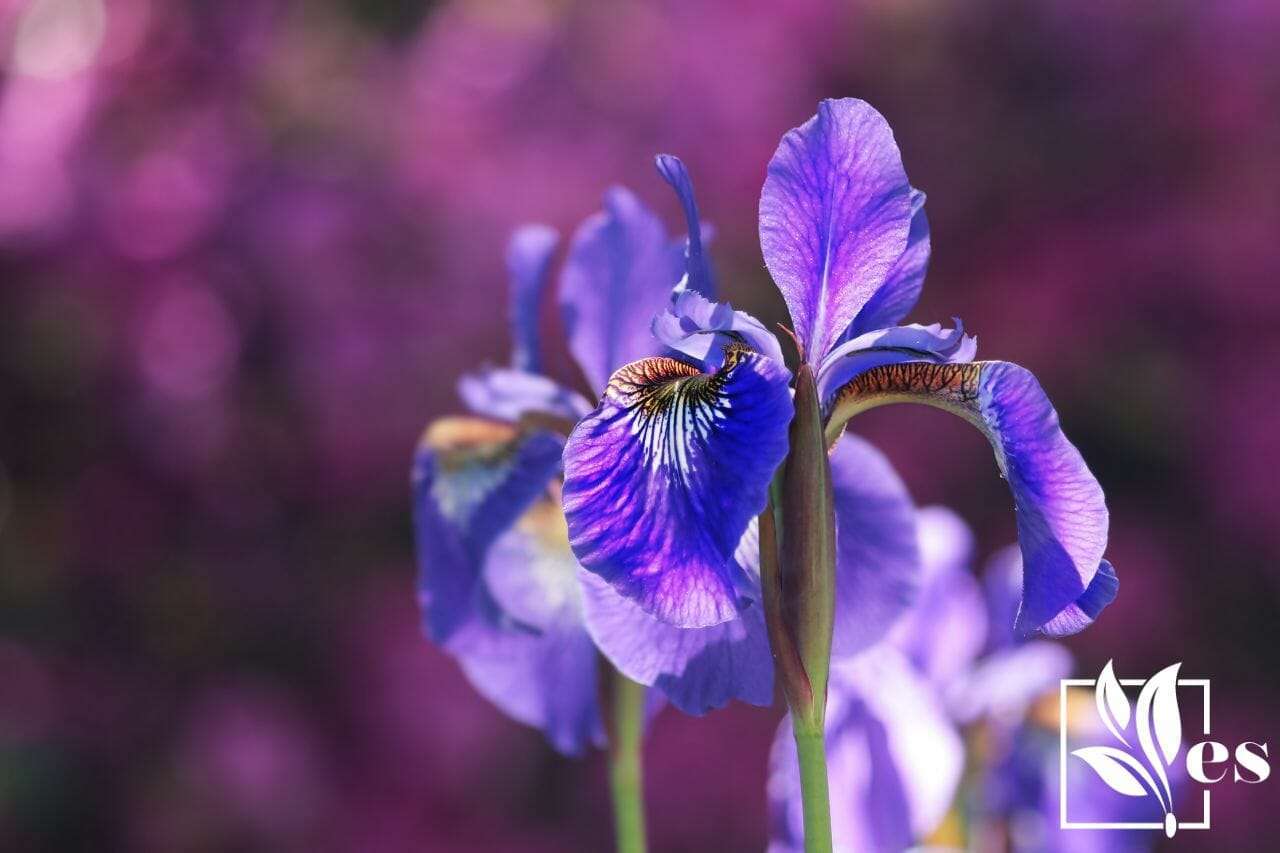 The iris is considered a messenger and the soul of summer in China. It announces the arrival of summer, and as the warm breeze blows, its petals flutter and soar like the delicate wings of a butterfly. This is why it is known in China as the “Purple Butterfly.”
The iris is considered a messenger and the soul of summer in China. It announces the arrival of summer, and as the warm breeze blows, its petals flutter and soar like the delicate wings of a butterfly. This is why it is known in China as the “Purple Butterfly.”
When consumed, the iris flower is also thought to extend life.
- Botanical Name: Iris
- Message: Wisdom, faith, purity, new beginnings
- Colors: Blue, purple, red, orange, yellow, white
- Popular Variations: Bearded iris, Iris typhifolia, yellow flag iris, dwarf bearded iris
- Growing zones: 3-10
- Light Requirements: Full sun
10. Peony Flowers
 For millennia, the peony blossom has been held in great reverence in China. They’re referred to as the “King of Flowers” and are considered China’s unofficial national flower.
For millennia, the peony blossom has been held in great reverence in China. They’re referred to as the “King of Flowers” and are considered China’s unofficial national flower.
During weddings and important ceremonies in ancient China, peonies were the flower of choice for decoration. Often, they were also embroidered into the clothing of royal family members.
- Botanical Name: Paeonia spp.
- Message: High value, honor, prosperity, fame, wealth
- Common Colors: Red, pink, white
- Popular Variations: Sarah Bernhardt, Karl Rosenfield, Shirley Temple
- Growing zones: 3-8
- Light Requirements: Full sun to partial shade
11. Trichosanthes Kirilowii
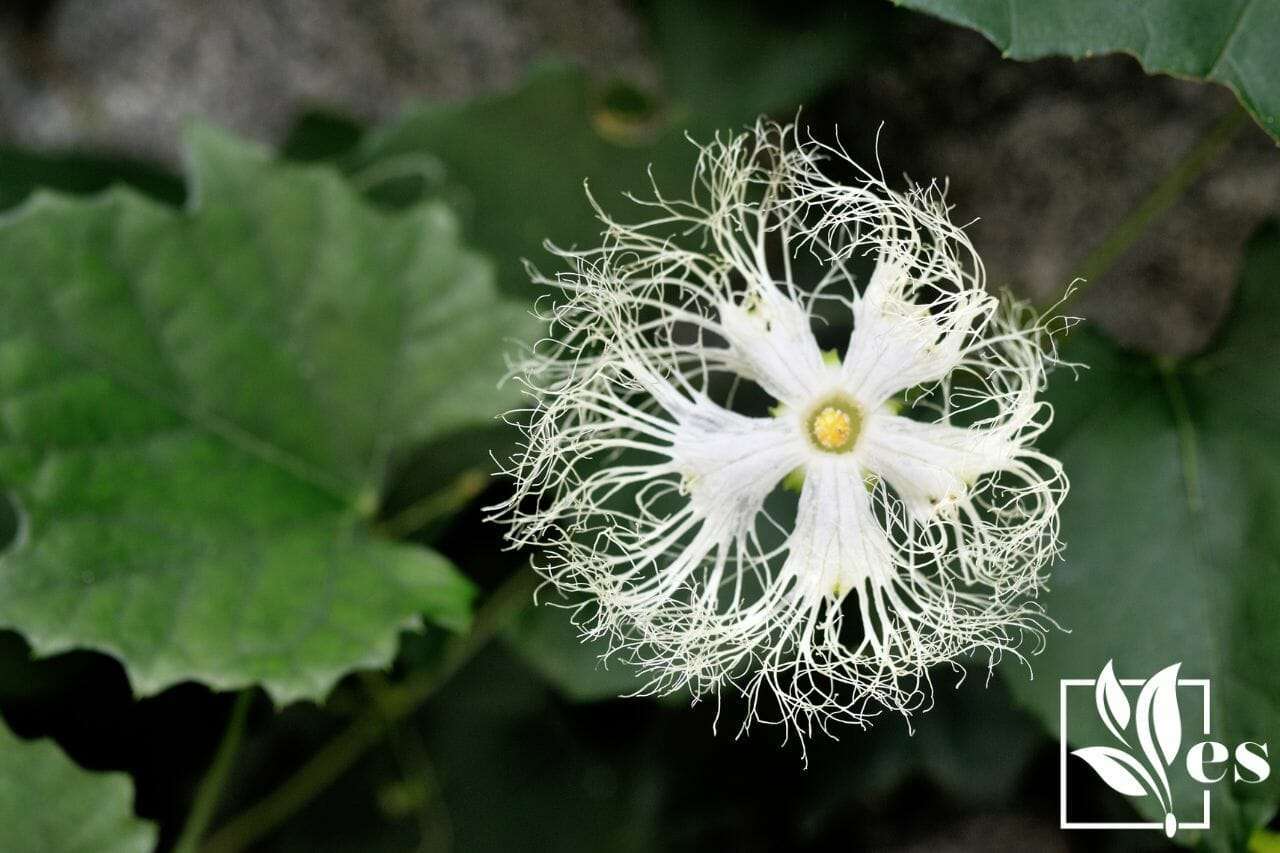 The trichosanthes kirilowii, often known as the Chinese snake gourd or Chinese cucumber, is a flowering plant indigenous to Shandong, Henan, Shanxi, Hebei and Shaanxi.
The trichosanthes kirilowii, often known as the Chinese snake gourd or Chinese cucumber, is a flowering plant indigenous to Shandong, Henan, Shanxi, Hebei and Shaanxi.
It is a perennial plant that grows at rapid rates, and it is also among the 50 essential herbs in traditional Chinese medicine.
- Botanical Name: Trichosanthes kirilowii
- Message: Healing
- Common Colors: White
- Popular Variations: Pointed gourd, snake gourd, Indrayan
- Growing zones: 8-11
- Light Requirements: Full sunlight, no shade needed
12. Sunflower
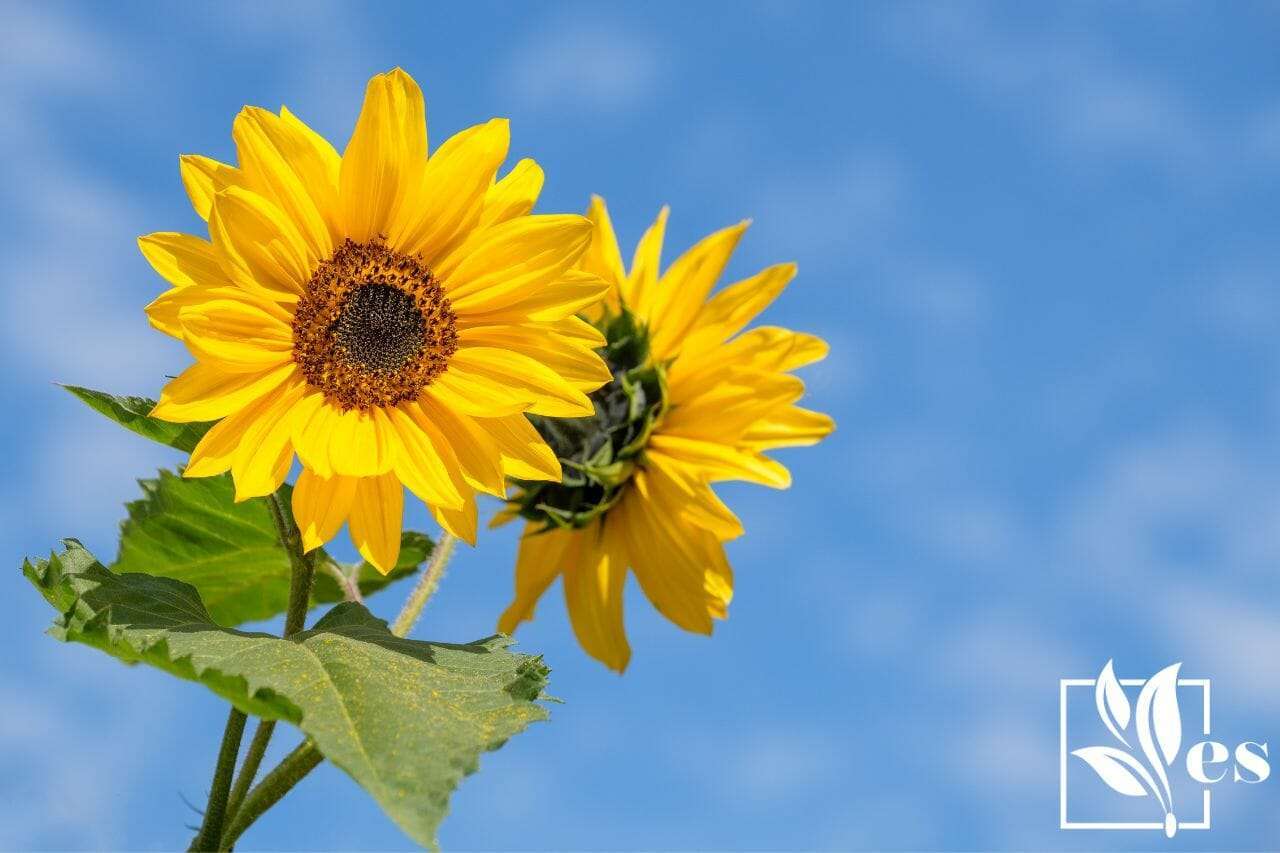 The sunflower is a symbol of good fortune and vitality in Chinese culture. Sunflowers are considered a blessing when given at the start of a new business or during graduation.
The sunflower is a symbol of good fortune and vitality in Chinese culture. Sunflowers are considered a blessing when given at the start of a new business or during graduation.
People in ancient China thought they possessed properties that would make their users immortal. To achieve immortality, members of the royal family would eat sunflower seeds as a snack.
- Botanical Name: Helianthus annuus
- Message: Good luck, longevity, happiness, vitality
- Common Colors: Yellow, golden yellow, ruby red, bronze, white
- Popular Variations: Little Becka, Elf, Soraya, American Giant
- Growing zones: 4-9
- Light Requirements: 6-8 hours of direct sunlight daily
13. Azalea
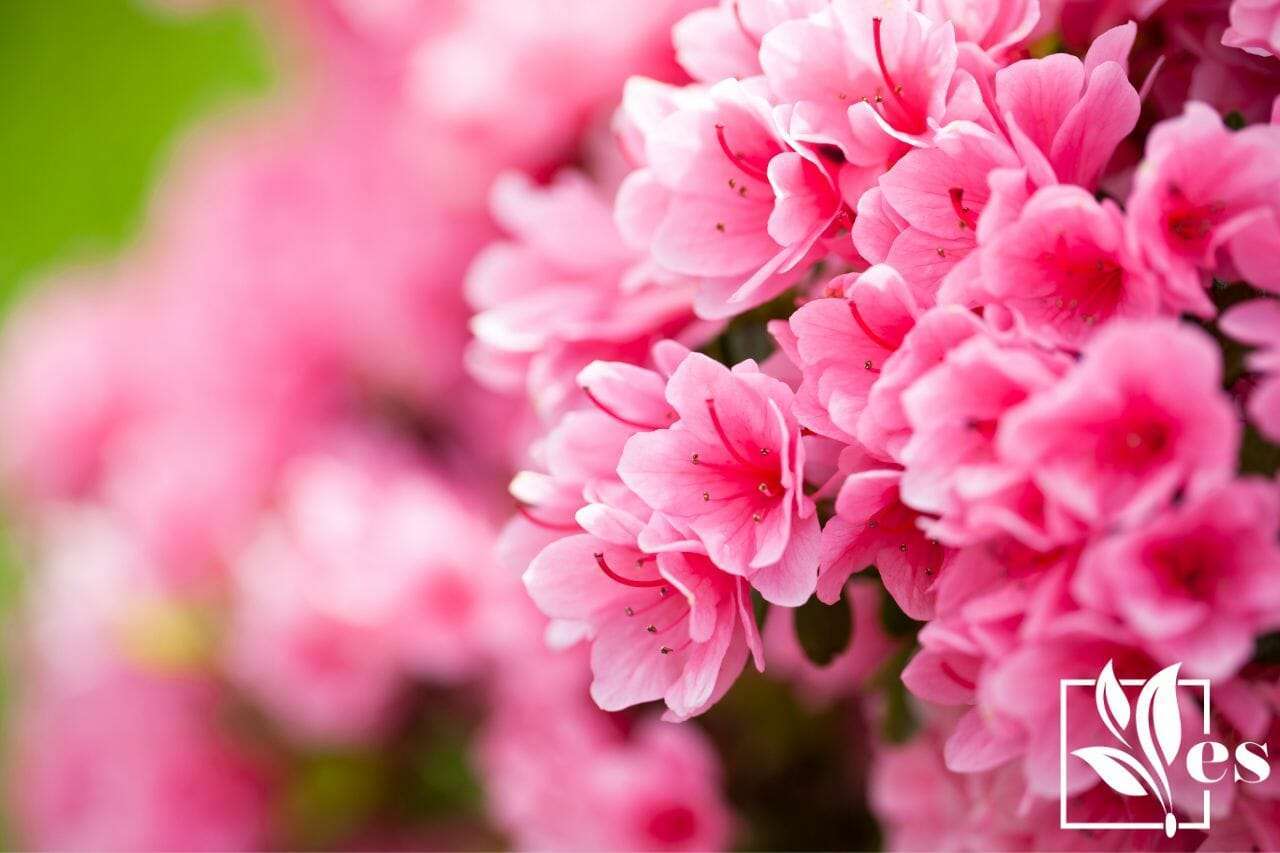 The azalea, a flower native to East Asia, is an essential decorative flower in classical Chinese gardens, and there are numerous varieties with differing levels of attractiveness.
The azalea, a flower native to East Asia, is an essential decorative flower in classical Chinese gardens, and there are numerous varieties with differing levels of attractiveness.
Poets from the Tang Dynasty made the flower legendary by expressing sadness and longing whenever they saw the azalea because it reminded them of home and their loved ones.
- Botanical Name: Rhododendron spp.
- Message: Womanhood, temperance, passion, fragility
- Common Colors: Red, yellow, pink, orange, white
- Popular Variations: Northern hi-lights, Lemon Lights, Encore Autumn Amethyst
- Growing zones: 6-9
- Light Requirements: Full sun or partial shade
14. Narcissus
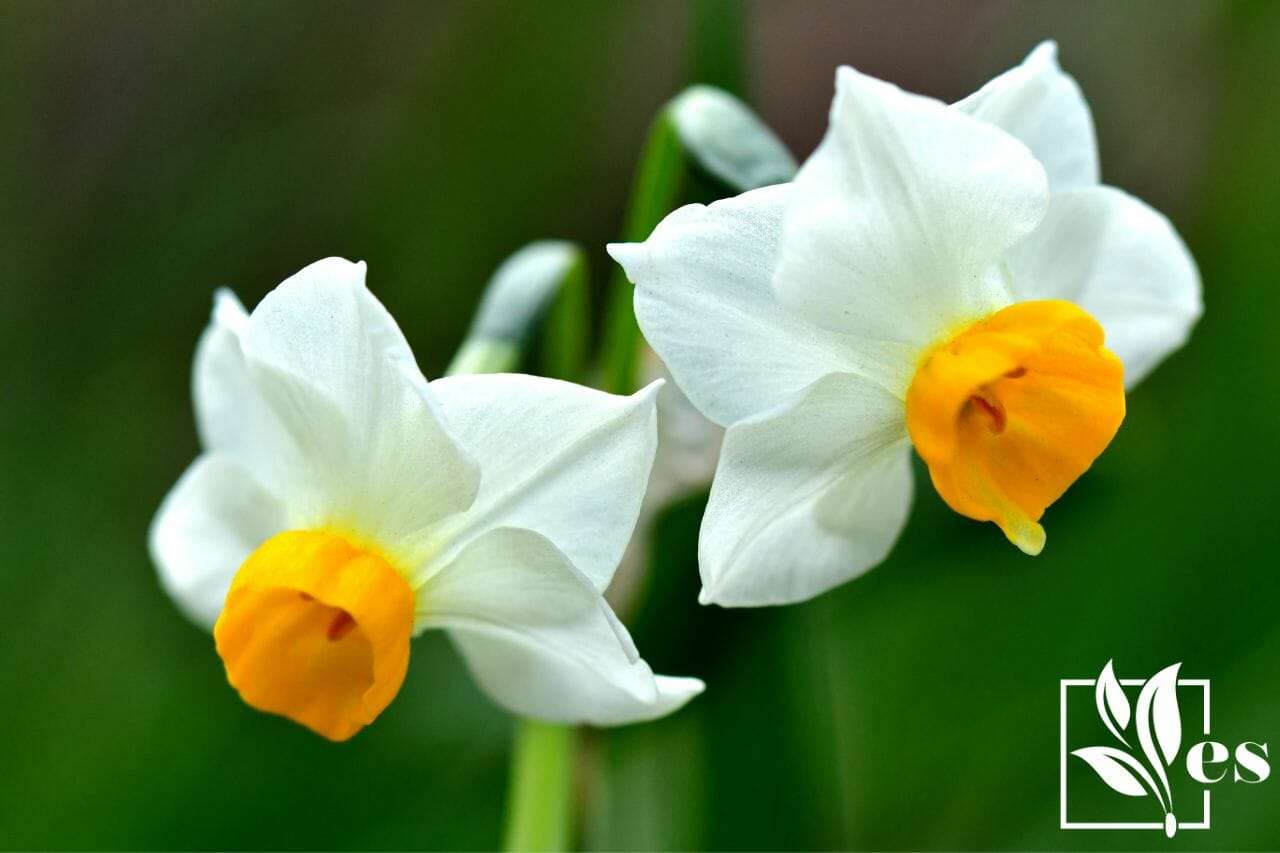 The Narcissus genus, which includes jonquils and is often known as the daffodil, has various names in Chinese culture. It is highly regarded for bringing glad tidings and is a sign of prosperity.
The Narcissus genus, which includes jonquils and is often known as the daffodil, has various names in Chinese culture. It is highly regarded for bringing glad tidings and is a sign of prosperity.
It is the Chinese New Year’s symbol, with various legends surrounding it including the water goddess of the Xiang River. In Fujian Province in East China, it is the most renowned and loved flower.
- Botanical Name: Narcissus
- Message: Good luck, prosperity, good fortune, re-birth
- Common Colors: White or golden tangerine
- Popular Variations: Paperwhite, cream narcissus, joss flower, Narcissus tazetta
- Growing zones: 8-11
- Light Requirements: Full sun or partial shade
15. Osmanthus
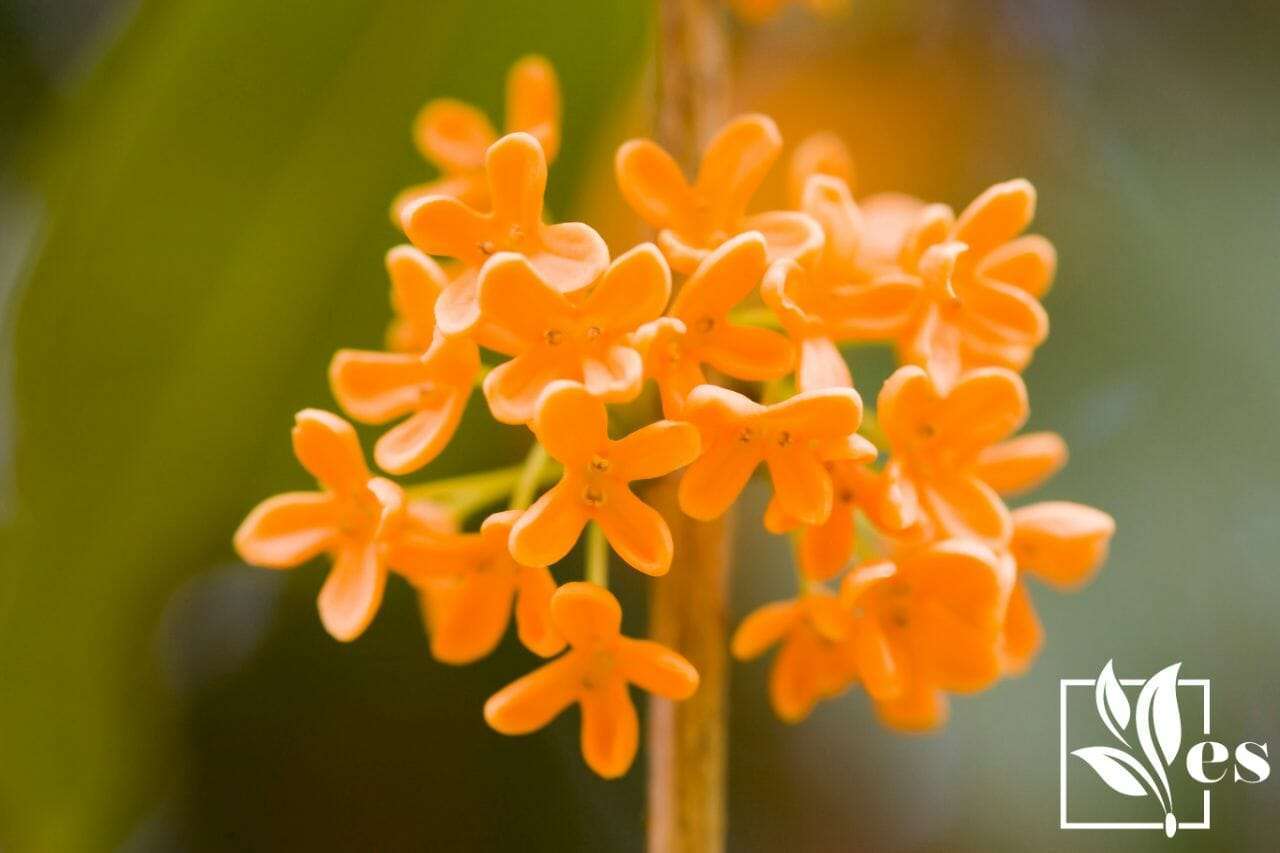 The Osmanthus is one of China’s ten renowned traditional flowers. In ancient China, only the wealthy and powerful could cultivate them. It signifies romance and is a prevailing symbol of love in Chinese culture.
The Osmanthus is one of China’s ten renowned traditional flowers. In ancient China, only the wealthy and powerful could cultivate them. It signifies romance and is a prevailing symbol of love in Chinese culture.
The Osmanthus has been cultivated in China for millennia and is used to make flower-scented tea. Many Osmanthus trees may be found in Guilin, a famous city with a landscape that many consider to be the best underneath the skies.
- Botanical Name: Osmanthus fragrans
- Message: Love, fertility, faithfulness, nobility, prosperity
- Common Colors: White, pale yellow, yellow, orange-yellow
- Popular Variations: Fundingzhu, Orange Supreme, Apricot Gold, Butter Yellow
- Growing zones: 9-11
- Light Requirements: Full sun to partial shade
16. Rhododendron
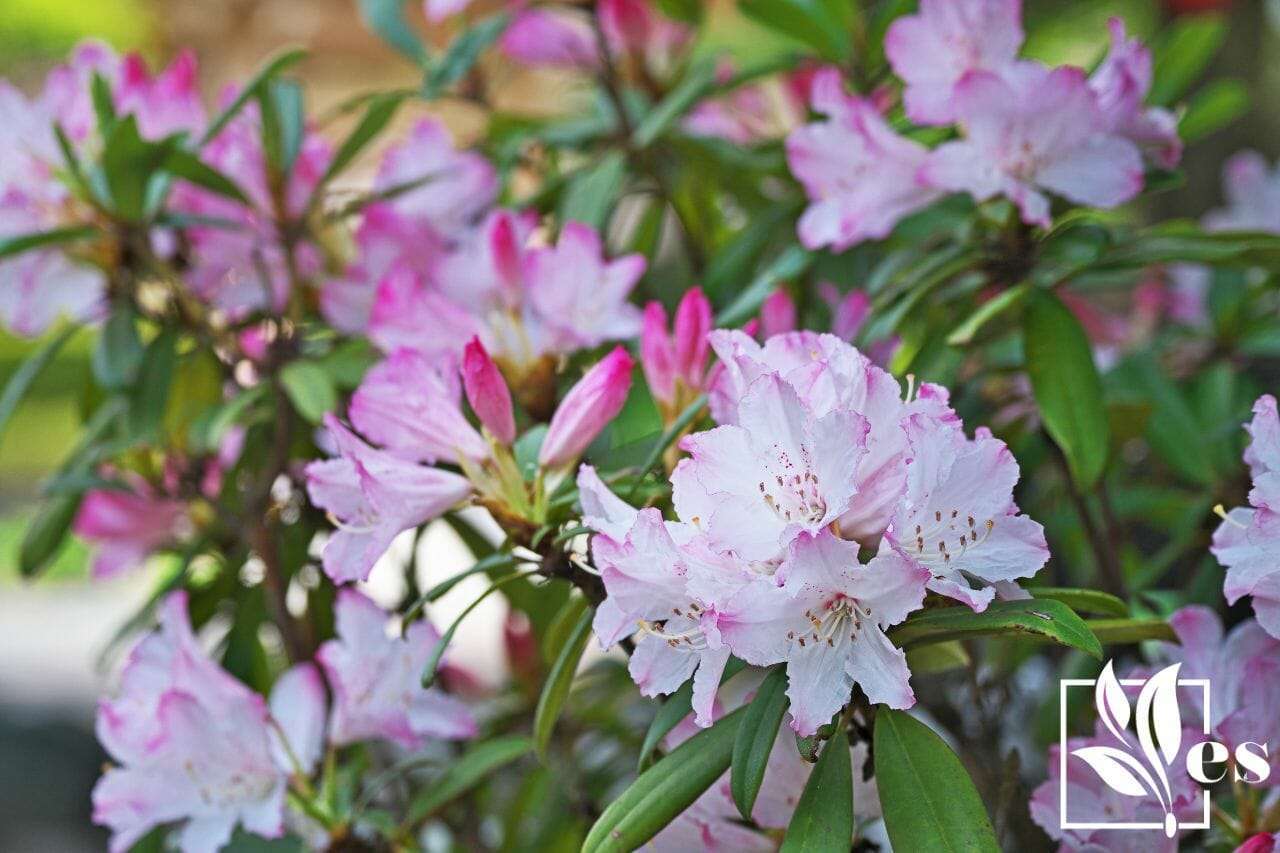 The rhododendron is one of China’s best-known flowers, commonly referred to as the Venus of Flowers. Its beauty has long been praised by Chinese poets and intellectuals — those from the Tang Dynasty even described it as surpassing all other blossoms in beauty and elegance.
The rhododendron is one of China’s best-known flowers, commonly referred to as the Venus of Flowers. Its beauty has long been praised by Chinese poets and intellectuals — those from the Tang Dynasty even described it as surpassing all other blossoms in beauty and elegance.
Rhododendrons are similar to azaleas in several aspects, but their bloom seasons, flowers, stamens, colors and foliage are all distinct.
- Botanical Name: Rhododendron spp.
- Message: Purity, beauty, devotion, innocence
- Common Colors: White, purple, orchid pink, red
- Popular Variations: Champion’s, Westlands, Hong Kong, Mrs. Farrer’s
- Growing zones: 8-10
- Light Requirements: Part shade to full shade
17. Gardenia
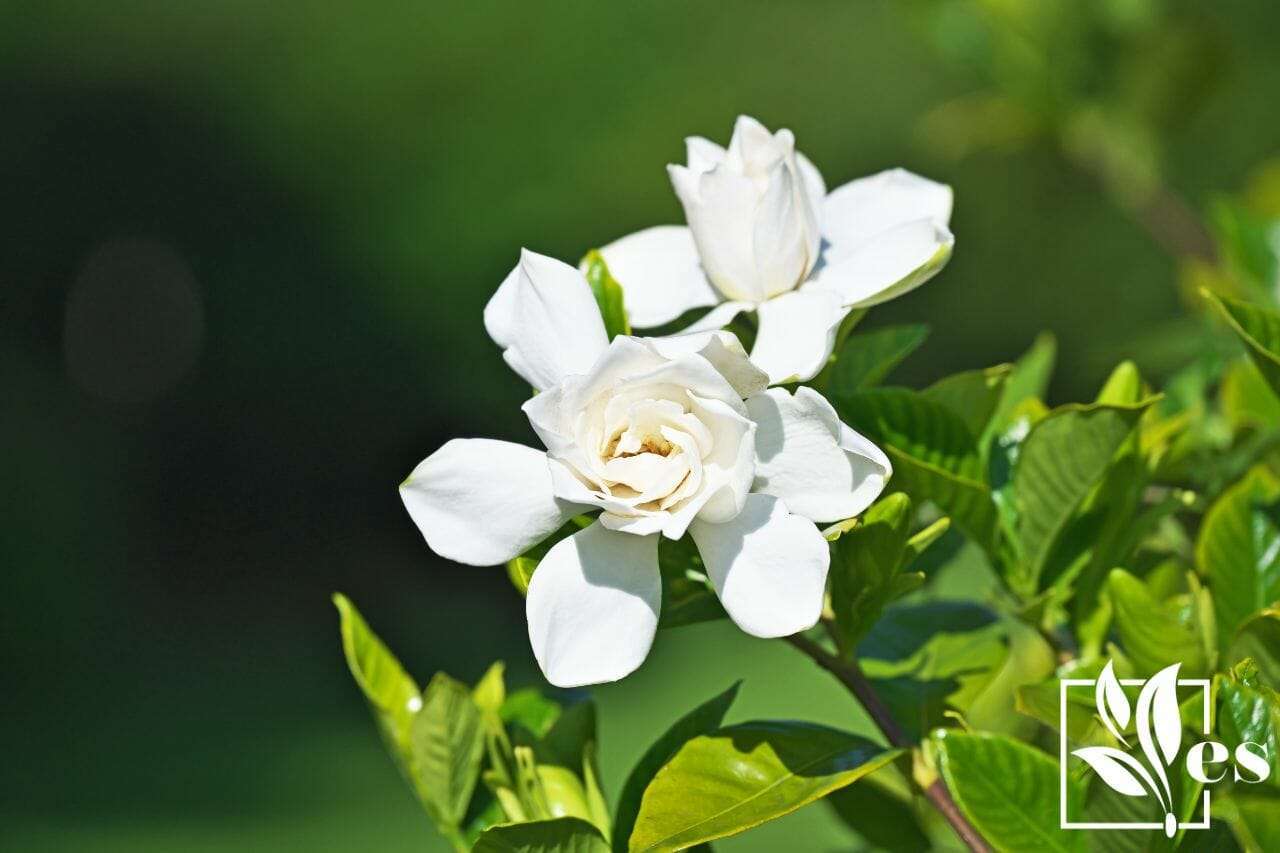 The gardenia is a flower that signifies feminine grace and fortitude. It is associated with November in Chinese history and culture. Gardenia blossoms were originally used to adorn Chinese women’s hair, and the perfume was used to make incense and cosmetics.
The gardenia is a flower that signifies feminine grace and fortitude. It is associated with November in Chinese history and culture. Gardenia blossoms were originally used to adorn Chinese women’s hair, and the perfume was used to make incense and cosmetics.
Another common use of the flower was for its seed, which was used to manufacture a yellow dye.
- Botanical Name: Gardenia spp.
- Message: Beauty, clarity, trust, hope, renewal
- Common Colors: White, yellow, red, pink
- Popular Variations: Four Seasons, Golden Magic, August Beauty, Belmont
- Growing zones: 8-11
- Light Requirements: Partial shade or bright, indirect sunlight
18. Jasmine
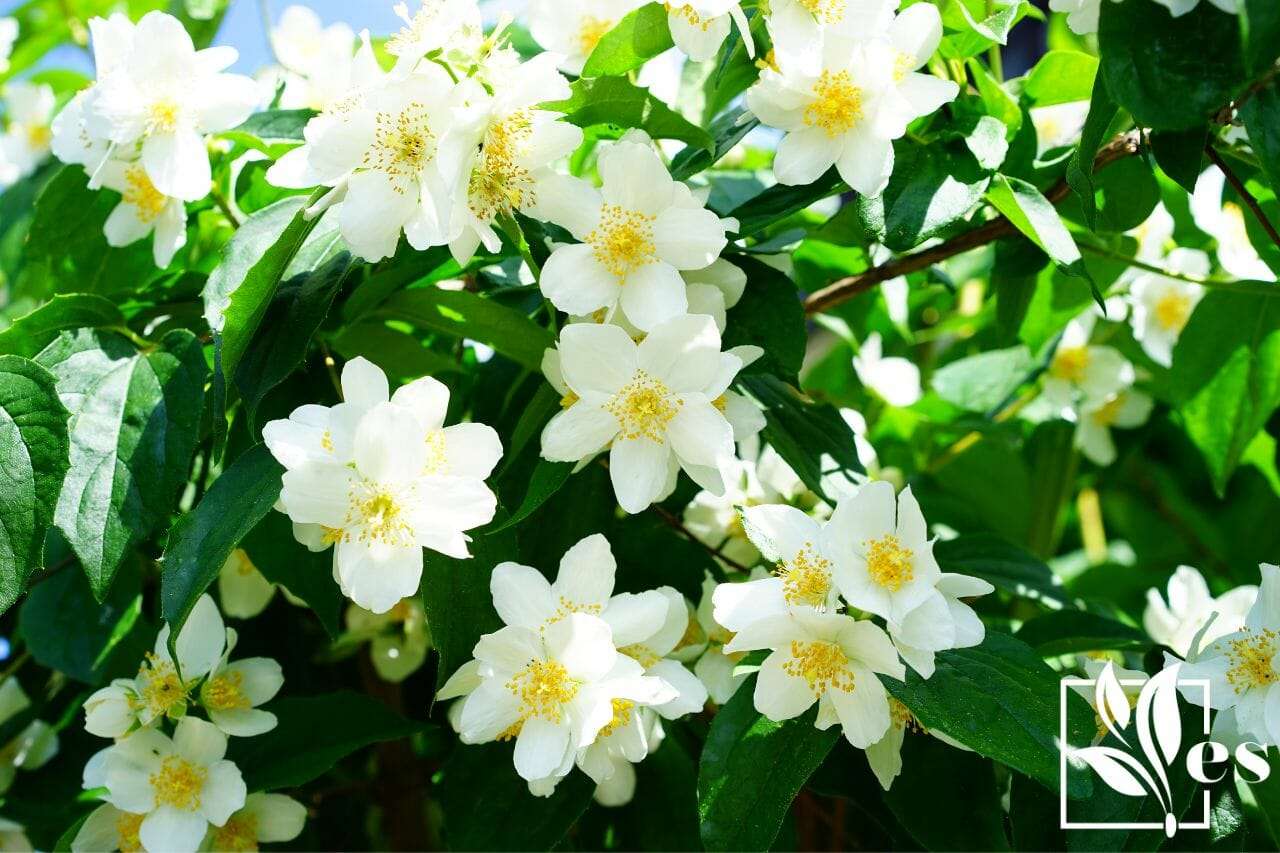 Jasmine was first planted in Fuzhou, China’s Fujian province’s major city, as far back as the Western Han Dynasty (206 BC to 9 AD). Jasmine is among the most sacred flowers of Buddhism and represents eternal love in Chinese culture.
Jasmine was first planted in Fuzhou, China’s Fujian province’s major city, as far back as the Western Han Dynasty (206 BC to 9 AD). Jasmine is among the most sacred flowers of Buddhism and represents eternal love in Chinese culture.
The aroma of jasmine, which has earned it the title Queen of the Night, is said to be divine.
- Botanical Name: Jasminum spp.
- Message: Beauty, love, sensuality
- Common Colors: White, yellow, bicolor blooms
- Popular Variations: Royal jasmine, winter jasmine, dwarf jasmine
- Growing zones: 8-10
- Light Requirements: Full sun to part shade
19. Lilies
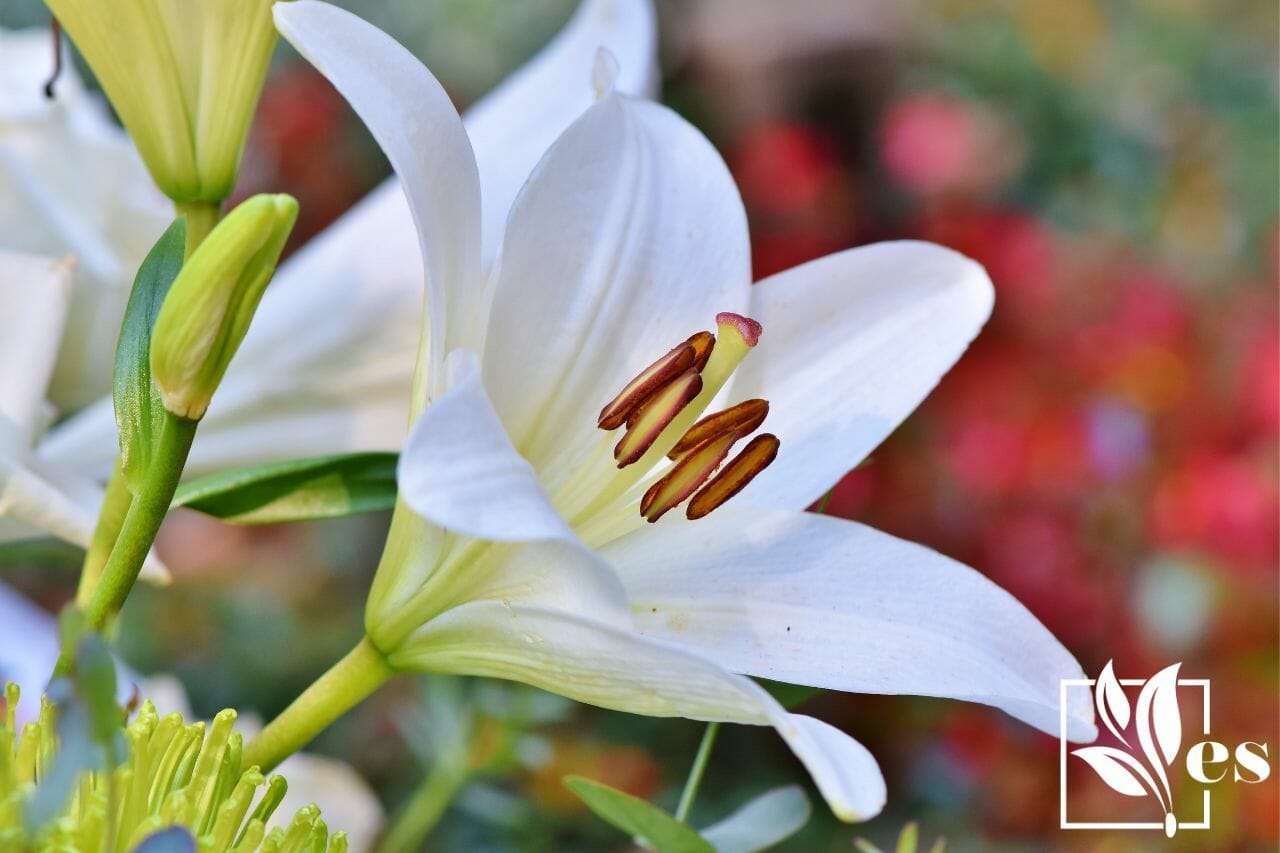 Lilies are a symbol of prosperity, peace and fortune in Chinese culture. They’re frequently given to women as wedding or birthday presents.
Lilies are a symbol of prosperity, peace and fortune in Chinese culture. They’re frequently given to women as wedding or birthday presents.
Lilies are believed to bring sons, and sons were prized in old Chinese culture. In China, the flower also signifies 100 years of love and is a popular ornamental choice for weddings.
- Botanical Name: Lillium
- Message: Love, happiness, good fortune, purity
- Common Colors: White, pink, yellow, red, orange
- Popular Variations: Oriental lilies, Asiatic lilies, trumpet lilies,
- Growing zones: 4-9
- Light Requirements: Full sun, part sun, or light shade
20. Aster
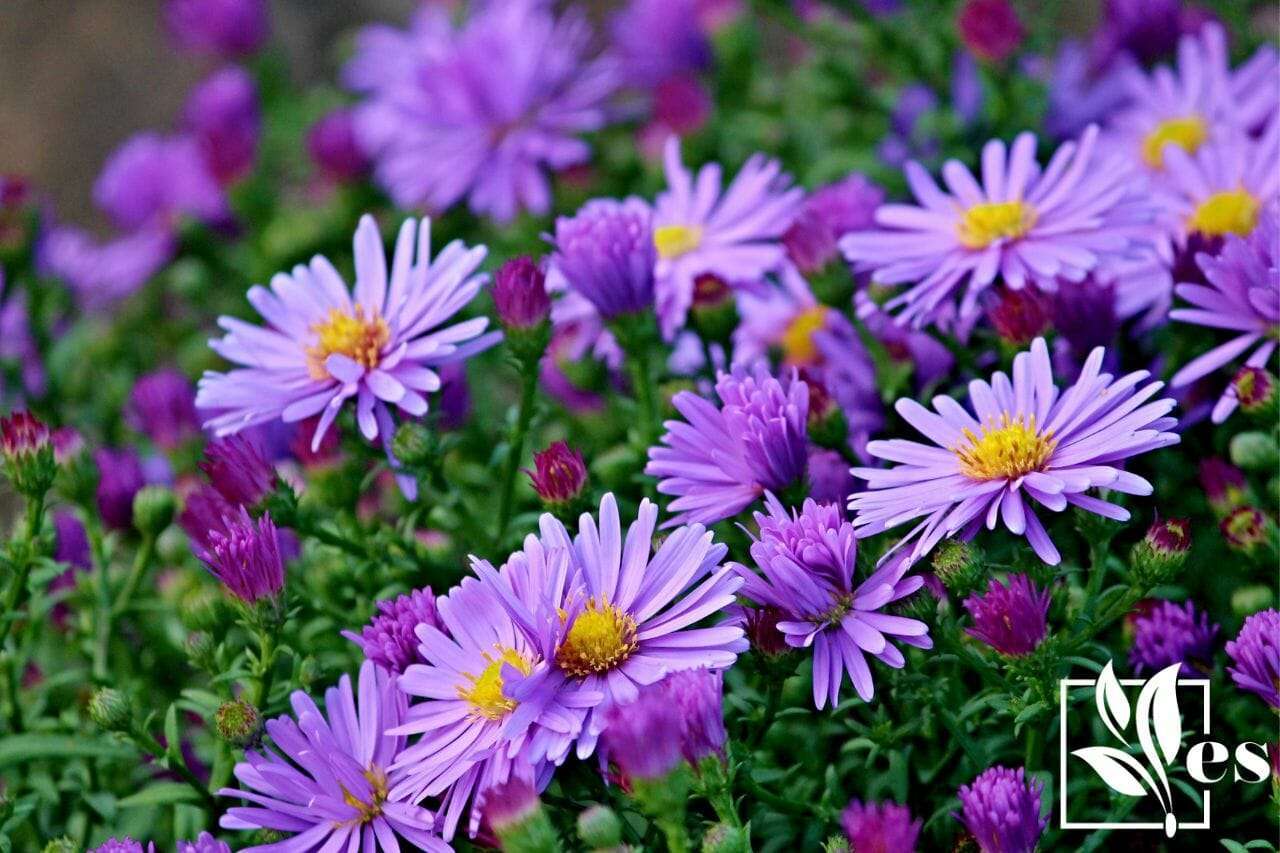 The aster is a daisy-like flower with a peculiar star-shaped flower head. Their cultivation in China dates back to as much as two millennia. Traditional Chinese medicine and tea are infused with asters to treat lung deficits, coughs, hangovers and indigestion.
The aster is a daisy-like flower with a peculiar star-shaped flower head. Their cultivation in China dates back to as much as two millennia. Traditional Chinese medicine and tea are infused with asters to treat lung deficits, coughs, hangovers and indigestion.
They’re composite flowers, with a core structure of many little flowers and long petals around it.
- Botanical Name: Asteraceae family
- Message: Wisdom, love, faith
- Common Colors: White, purple, red, pink
- Popular Variations: Crego Giant, Fireworks, Gala, Gremlin Double
- Growing zones: 2-11
- Light Requirements: Full sun to partial shade
21. Wintersweet
 Wintersweet is known in China as the December flower since it has blooming trees that flourish during the colder months, unbothered by the cold.
Wintersweet is known in China as the December flower since it has blooming trees that flourish during the colder months, unbothered by the cold.
This sweet-scented, dome-like flower blossoms from November to March, and can tolerate the harshest of winters and heaps of snow.
- Botanical Name: Chimonanthus praecox
- Message: Fearless, strong, unbending
- Common Colors: Bright yellow, gold, purple, red, white
- Popular Variations: Grandiflorus, Luteus
- Growing zones: 7-9
- Light Requirements: Full sun to partial shade
22. Balsamine
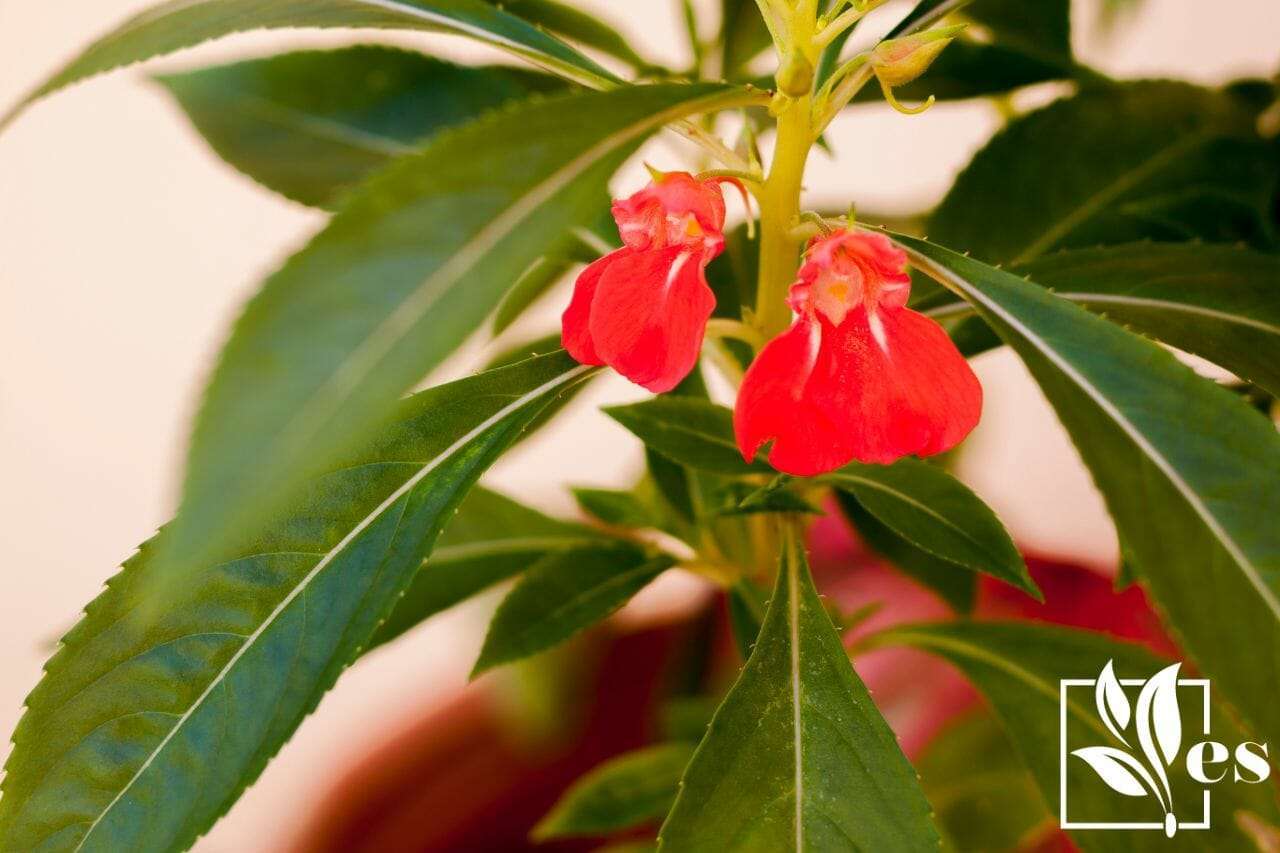 Balsamine, also known as the July flower in China, can easily reach 30 inches in height indoors and in house gardens. However, when left alone in the wild, it can grow to much greater heights.
Balsamine, also known as the July flower in China, can easily reach 30 inches in height indoors and in house gardens. However, when left alone in the wild, it can grow to much greater heights.
Different components of the plant have therapeutic qualities, and they have commonly been used in traditional Chinese medicine to treat diseases and skin conditions. Balsamine is thought to be a phoenix manifestation, which is one of the most powerful and beautiful legendary animals in Chinese mythology.
- Botanical Name: Impatiens balsamina
- Message: Energy, beauty, attractiveness
- Common Colors: Red, pink, purple, white
- Popular Variations: Rose balsam, garden balsam, spotted snapweed
- Growing zones: 2-11
- Light Requirements: Full sun or partial shade
23. Water Lilies
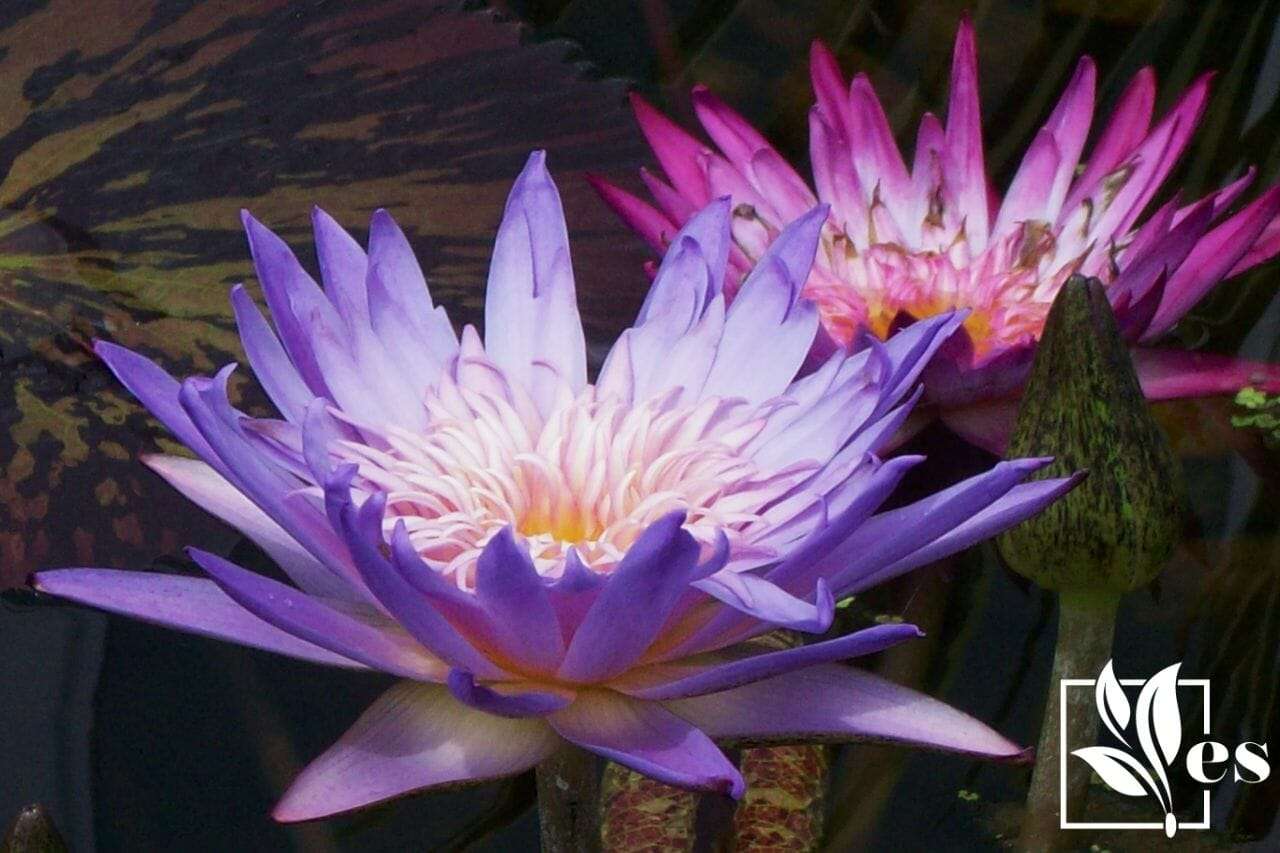 Water lilies have been grown as ornamental plants in China for over 3,000 years, and their Chinese name translates to sleeping lotus. The flower was originally a fallen star from the sky that changed into a water lily, according to popular legend.
Water lilies have been grown as ornamental plants in China for over 3,000 years, and their Chinese name translates to sleeping lotus. The flower was originally a fallen star from the sky that changed into a water lily, according to popular legend.
Because their petals fold at night and reopen at the break of dawn, they are associated with resurrection in Chinese and Buddhist traditions.
- Botanical Name: Nymphaeaceae
- Message: Purity, divine birth, regeneration
- Common Colors: White, yellow, pink, red, pastel orange
- Popular Variations: Pale Moon, Morning Mist, Maroon Pink
- Growing zones: 9-11 (tropical) and 4-11 (hardy)
- Light Requirements: 6 hours of direct sunlight minimum
24. Chinese Sacred Lily
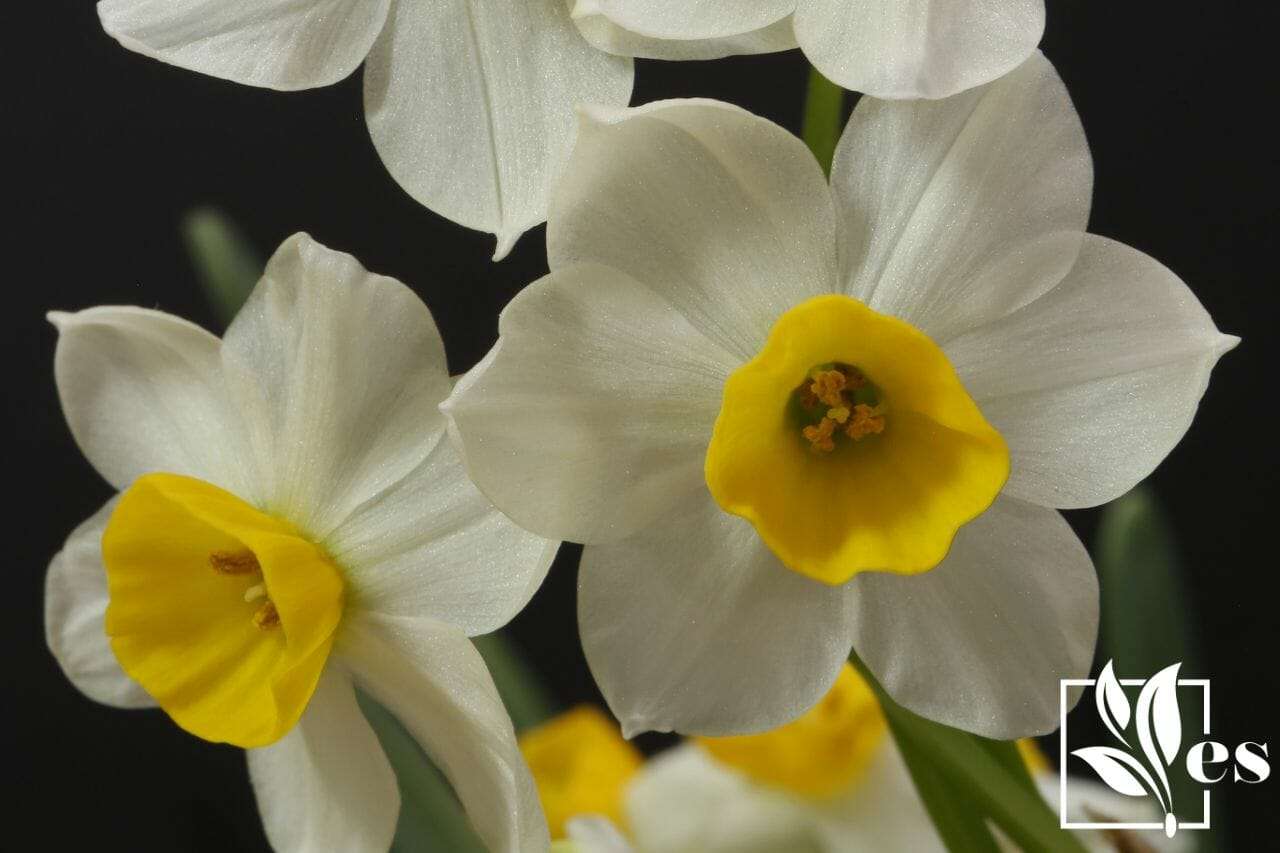 Because of its elegance and scent, the Chinese sacred lily has been grown in China for over 1,000 years and is one of the top ten most famous flowers.
Because of its elegance and scent, the Chinese sacred lily has been grown in China for over 1,000 years and is one of the top ten most famous flowers.
During the Chinese Spring Festival, sacred lily bulbs are essential for many Chinese households.
- Botanical Name: Narcissus tazetta
- Message: Abundance, purity, grace, good fortune
- Common Colors: Golden tangerine, white
- Popular Variations: Bunch flowered daffodil, polyanthus daffodil
- Growing zones: 1-10
- Light Requirements: Full sun or partial shade
25. Ranunculus
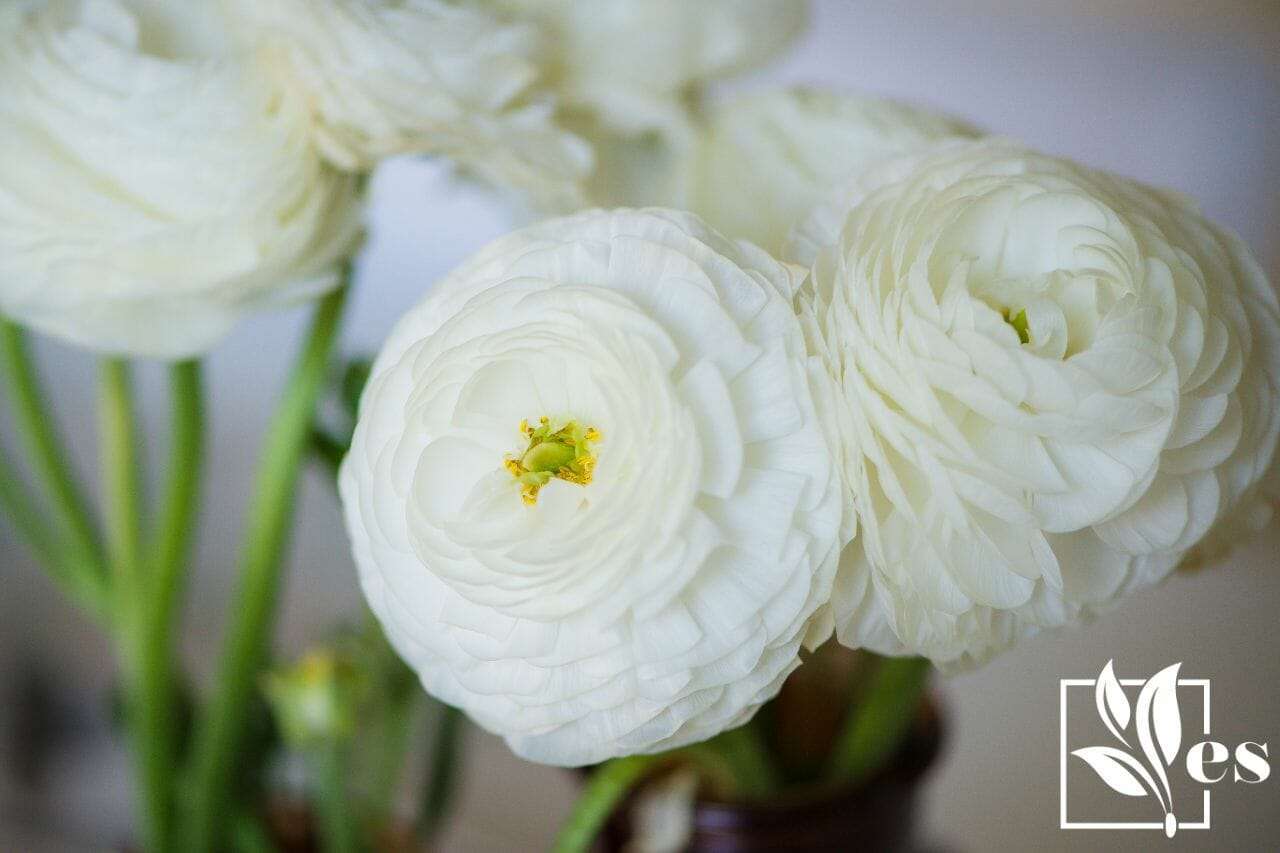 Ranunculus flowers, also known as buttercups, come in 78 different species and nine different variations in China.
Ranunculus flowers, also known as buttercups, come in 78 different species and nine different variations in China.
They are known for their versatility and have long been utilized in folk remedies. People utilized them in divination to give enlightenment and establish spiritual connections in ancient times.
- Botanical Name: Ranunculus spp.
- Message: Attractiveness, charm, perseverance, divinity
- Common Colors: White, pink, red, yellow, purple
- Popular Variations: Persian buttercup, meadow buttercup, hairy buttercup
- Growing zones: 8-10
- Light Requirements: Full sun
26. Tulip
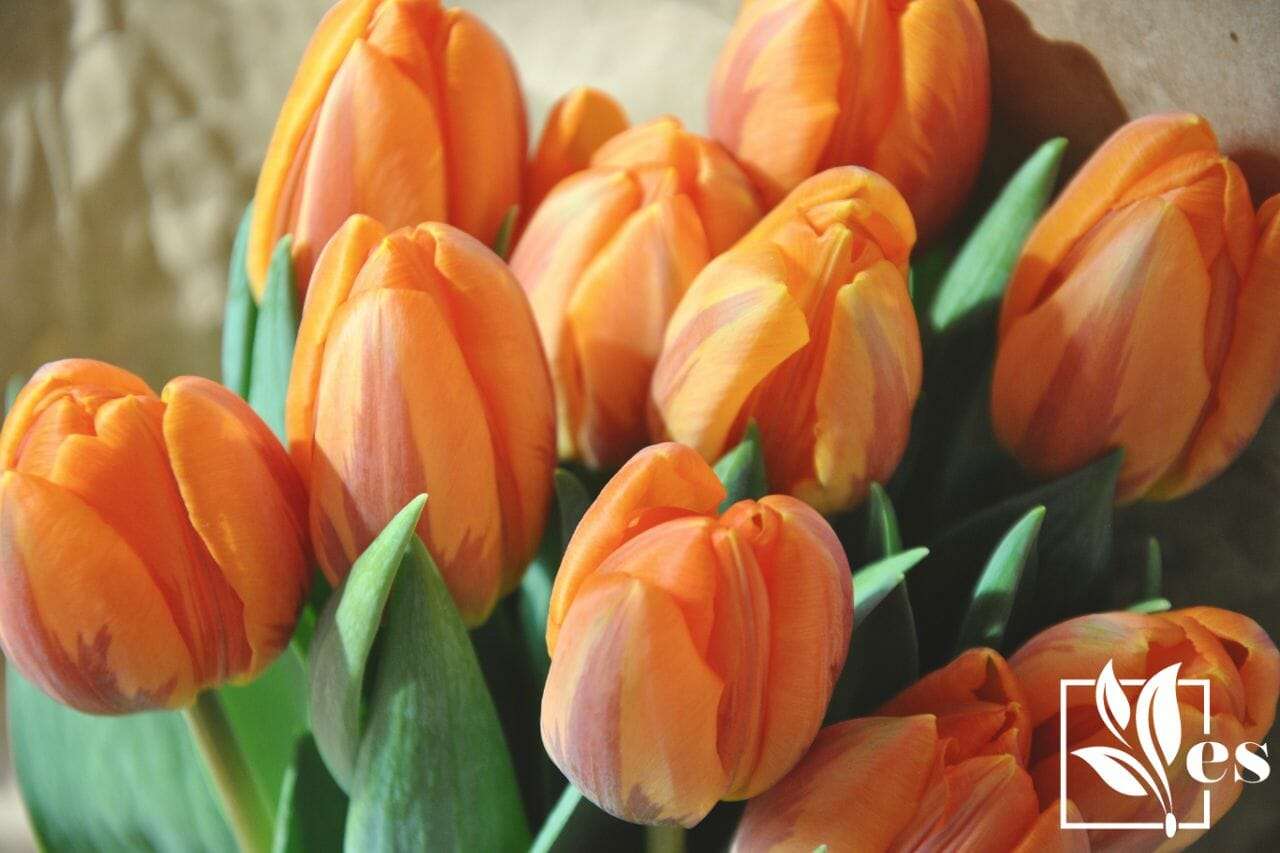 Tulips thrived untamed in the Tian Shan mountains until the 17th-century tulip fever turned them into an exotic rarity and collector’s item.
Tulips thrived untamed in the Tian Shan mountains until the 17th-century tulip fever turned them into an exotic rarity and collector’s item.
They have captivated people for decades, and they are seen as a statement of love and a sign of new beginnings.
- Botanical Name: Tulipa
- Message: Luck, prosperity, love, rebirth
- Common Colors: White, red, pink, yellow, purple
- Popular Variations: Triumph tulips, Darwin tulips, fringed tulips
- Growing zones: 3-8
- Light Requirements: Full sun
27. Chinese Carnation
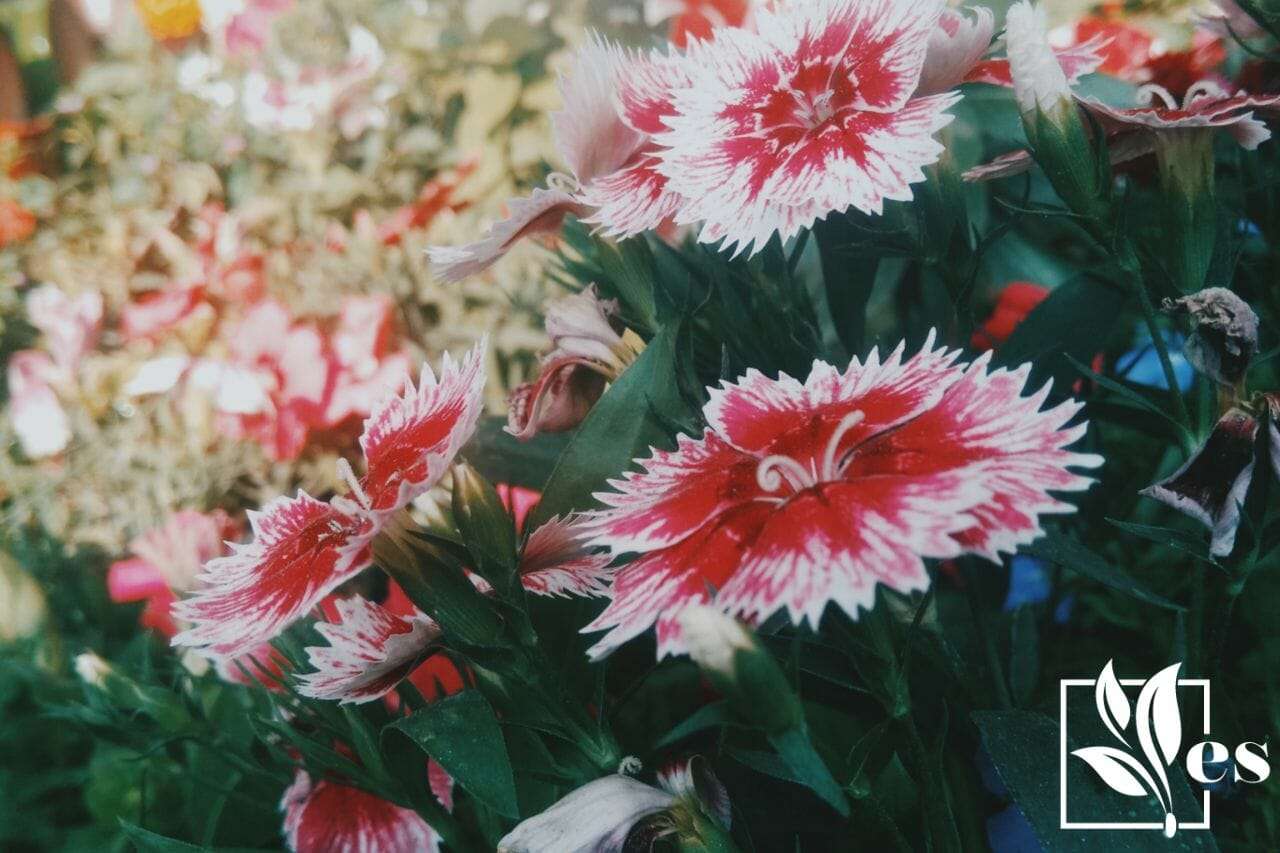 China pink is another popular name for Chinese carnations. It comes in a variety of vibrant hues and is ideal for decorating garden boxes, garden beds and fences.
China pink is another popular name for Chinese carnations. It comes in a variety of vibrant hues and is ideal for decorating garden boxes, garden beds and fences.
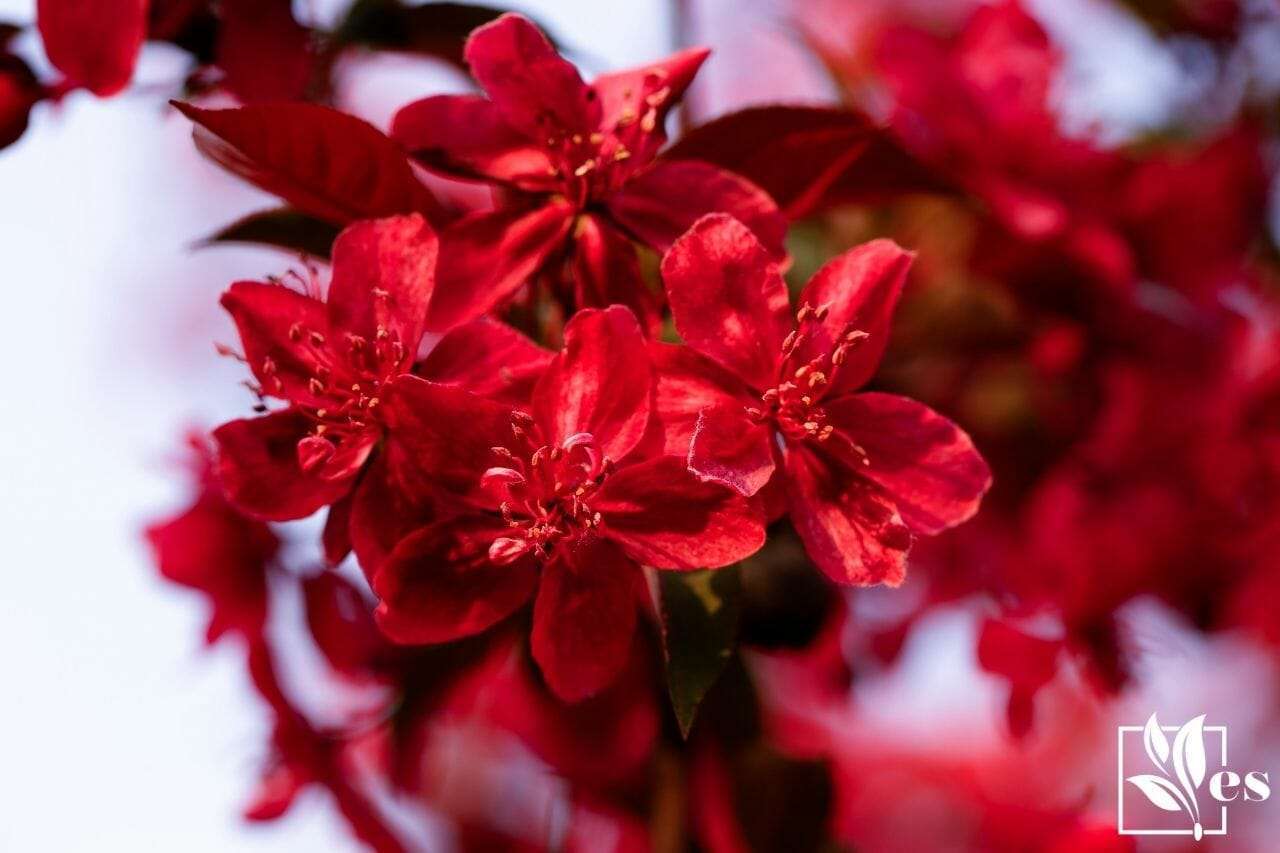
It can be planted as early as February, and once rooted, it doesn’t require much care. It’s a Chinese native with a long flowering season that lasts from March to October.
- Botanical Name: Dianthus chinensis
- Message: Fascination, love, gratitude
- Common Colors: Solid or mixed white to red with instances of pink, purple
- Popular Variations: Floral Lace Crimson, Diamond Blush Pink
- Growing zones: 6-9
- Light Requirements: Full sun or partial shade
| Flower | Why It’s Special |
| Plum Blossoms | Blossoms even in harsh winters |
| Chinese Rose | Makes for thoughtful gifts |
| Camellia | Oil extract used for sharpening tools |
| Lotus Flowers | Treats cough, fevers, and stomach disorders |
| Orchid | Almost as old as the earth as it is today! |
| Chrysanthemum | Great for pain relief, particularly headaches |
| Hibiscus | Plenty of health benefits |
| Magnolia | Treats depression, stomach issues, and encourages weight loss |
| Iris | Adds to health and wellbeing; believed to extend life |
| Peony Flowers | Perfect choice of ornamental flowers |
| Trichosanthes Kirilowii | A great perennial that grows super fast |
| Sunflower | Its seeds make for a great healthy snack |
| Azalea | A popular decorative flower in China since it has many varieties of varying beauty |
| Narcissus | Makes for a precious gift to congratulate a loved one |
| Osmanthus | Used to prepare an aromatic tea |
| Rhododendron | Described to surpass all other flowers in beauty and grace |
| Gardenia | Was commonly used in cosmetics and perfumes |
| Jasmine | Representative of eternal love |
| Lilies | Makes for a meaningful birthday or wedding gift for women |
| Aster | Mixed with tea to treat lung deficits, coughs, hangovers, and indigestion |
| Wintersweet | Beautiful flower that thrives even in the dead of winter |
| Balsamine | Used in traditional Chinese medicine and skin care |
| Water Lilies | Believed to be a fallen star |
| Chinese Sacred Lilies | A household essential during the Chinese Spring Festival |
| Ranunculus | Has a history of use in folk remedies |
| Tulip | An exotic rarity and collector’s item |
| Chinese Carnation | Ideal for decorating garden boxes, garden beds, and fences |



